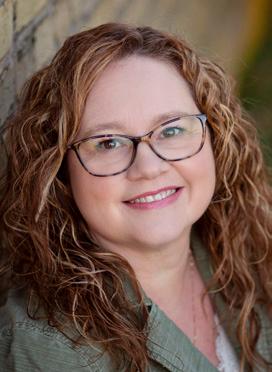
of the greater rockford business community


of the greater rockford business community
By Christine Hand, managing editor
At the annual Greater Rockford Chamber of Commerce (GRCC) Pow(H)er conference on Nov. 13, a panel of local elected officials—Dawn Granath, 9th Ward alderwoman, Rockford City Council; Christina Valdez, 16th Ward councilwoman, Winnebago County Board; and Nicole Bennett, vice president, Rockford Public Schools Board of Education—will speak about their experiences running for public office.
For this article, we asked those same panelists to share their insights on how local businesses can work successfully

with elected officials to build valuable relationships that benefit their companies and the community.
Most business owners and managers are far too familiar with the common interactions between business and government, such as permits, inspections, and other compliance issues. But there are a number of situations when direct communication with local elected officials is beneficial to both parties.
“Businesses should have conversations early about new ideas or new business ventures,” Granath said. “We’re a big city with small town connections. There’s probably some sort of government entity that can help. And your alderman is someone in your neighborhood who can help you identify the right combination of officials, nonprofits, and economic development organizations.”
Bennett agrees: “I always appreciate it when the community reaches out to me, because I want to be engaged and know what the needs are. That way, I can help elevate those requests by sending them on to the appropriate people.”
Valdez says getting to know your elected officials is essential to facilitating two-way communication: “There are a lot of things that we can help with and areas where we can provide clarity. We’re here to uplift the businesses in our districts. And we can’t do that to the best of our abilities if we’re not aware of what’s going on.”
Overly burdensome bureaucracy is a common complaint among business leaders everywhere. (Just look at the responses to that question in GRCC’s
(continued on page 6)

On Oct. 14, Stellantis announced plans to invest $13 billion over the next four years to grow its business in the critical United States market and to increase its domestic manufacturing footprint. The investment is the largest in the company’s 100-year U.S. history and will support the introduction of five new vehicles across the brand portfolio in key segments; production of the all-new fourcylinder engine; and the addition of more than 5,000 jobs at plants in Illinois, Ohio, Michigan and Indiana.
As part of this plan, Stellantis intends to invest more than $600 million to reopen the Belvidere Assembly Plant to expand production of the Jeep® Cherokee and Jeep Compass for the U.S. market. With an initial production launch expected in 2027, these actions are anticipated to create around 3,300 new jobs.
The time is right for renewed regional investment in economic development
By Terrance Hall, Eight Fifteen Impact
In March 2024, the Greater Rockford Chamber of Commerce (GRCC) engaged Eight Fifteen Impact to develop a new strategy and tactical plan for the organization’s newly chartered economic development work. At the time, I was coming off a three-year tenure as a site selection consultant— evaluating communities across the U.S. for their potential to attract corporate investment and partnering with local leaders to build strategies that unlock that potential.
The chance to apply that same disciplined approach to assessing opportunities and challenges here in Rockford, a community where I started
my career and have grown to love, was simply too good to pass up. Together, GRCC and Eight Fifteen Impact set out with three primary goals:
• Develop a strategic roadmap to guide economic development efforts with clear, actionable tasks and measurable outcomes.
• Strengthen GRCC’s strategic capability by rolling out real, handson initiatives and creating practical tools and processes that support longterm growth.
(continued on page 4)
The $13 billion investment plan includes research and development and supplier costs to execute the company’s full product strategy over the next four years as well as investments in its manufacturing operations.
“As we begin our next 100 years, we are putting the customer at the center of our strategy, expanding our vehicle offerings and giving them the freedom to choose the products they want and love,” said Antonio Filosa, Stellantis CEO and North America COO. “Accelerating growth in the U.S. has been a top priority since my first day. Success in America is not just good for Stellantis in the U.S.—it makes us stronger everywhere.”
CEO PERSPECTIVE
By Angela Kay Larson, Greater Rockford Chamber of Commerce
On my desk, you’ll find a small textbook, “First Lessons in Civics,” published in 1898. The book is a relic, yet I find many of its lessons enlightening, causing me to wonder why civics is no longer standard curriculum in our country’s schools. According to the National Education Association, only 25% of U.S. students reach the “proficient” standard on the 2022 National Assessment of Educational Progress Civics Assessment. Apparently, we are still assessing civics nationally, even though it’s not been widely taught since the 1960s.
According to the Illinois State Board of Education, civics is a mandatory component of social studies in Illinois, with a semester-long civics course required for high school graduation, and a semester of civics for middle schoolers, mandated as of the 2020-21 school year.
I don’t remember learning civics in school. I do remember taking the constitution test as a requirement for high school graduation and writing out the Preamble. Having watched a lot of Saturday morning television in the late 70s and early 80s, I had the “School House Rock” advantage. To this day, I can recite, er sing, the Preamble to the Constitution of the United States of “America-ah.”
I guess I’ve always had a general idea of what civics is as a subject area, but, to get the specifics, I had to look it up … “Civics is the study of the rights, duties, and privileges of citizens and how government works. It encompasses learning how to participate in a community, understanding governmental structures at local, state, and federal levels, and developing the knowledge, skills, and dispositions to be an active and informed member of society.”
That’s pretty broad, which explains why my antique textbook includes
chapters on The Government of Self, The Family (two chapters), The Government of Schools (also two chapters), Citizenship – Who Are Citizens, Civil Rights, and all the expected chapters on voting, elections and the various levels of government and laws. These lessons demonstrate that civics is foundational and it’s not just about acquiring the knowledge; it’s about using it.
In teaching civics, my textbook extols the importance of continually engaging pupils in debate “where questions of public interest are discussed fully and fairly.” While the textbook is antiquated, learning to debate fully and fairly is useful today. The importance of debate is further explained in the text: By means of debate they may learn to tolerate and respect the opinions of others, to recognize the work of others, to express themselves with candor but not with violence and abuse, to abandon notions based upon ignorance and prejudice, to submit gracefully to defeat.
As a society, I feel we spend a lot of time debating, having not fully learned tolerance, respect, how to abandon ill-based notions, and how to submit gracefully to defeat. I would not have thought to look to civics lessons to learn these skills, and I’m curious to know how they are being taught today in families, churches, and schools.
On a related note, Greater Rockford Chamber of Commerce has offered our support to the RPS205 Board of Education in selecting our largest school district’s next superintendent. You can read about the expectations drafted by our task force in this issue of the VOICE. One of the areas we call out is “Employability Skills.” We ask for a “commitment to integrating employability skills into classroom teaching and extracurricular activities with clear metrics that are regularly reported to evaluate students’

By means of debate they may learn to tolerate and respect the opinions of others, to recognize the work of others, to express themselves with candor but not with violence and abuse, to abandon notions based upon ignorance and prejudice, to submit gracefully to defeat.
improvements.”
The Illinois Essential Employability Skills Framework was developed in collaboration with the Illinois Community College Board; the Illinois Department of Commerce and Economic Opportunity; representatives of Illinois businesses; local chambers of commerce; and secondary, postsecondary and adult educators. These professionals identified ten skills related to personal ethic, work ethic, communication, and teamwork. A few of them take a page right out of my old-school civics handbook: integrity, respect, perseverance, and positive attitude.
Whether taught through civics

lessons, math class, art school, or tennis club—skills for being a good citizen are still relevant and needed more than ever.
I don’t think we should solely rely on our schools to teach them. I think we should all strive to practice and impart the ten skills: integrity, respect, perseverance, positive attitude, dependability, professionalism, active listening, clear communication, critical thinking, and effective and cooperative work. Perhaps as a first step, we could memorize them by turning them into a song. “We the people …”
In the irony of all ironies, we compiled our “Working with the Government” issue at a time when the federal government wasn’t working. Fortunately, our partners in state and local government came through for us, as did our business contributors. In these pages, you’ll hear about successful collaborations between civic leaders and business leaders, gain valuable tips on interacting with government agencies, and learn about important tax changes. Consider the information in this issue part insight and part research. In the coming months, you may start to notice some changes to the VOICE, such as more images and shorter articles (some, but not all). This is in response to feedback we received during a recent VOICE focus group hosted by GRCC. We’re extremely grateful to this small group of informed and engaged Chamber members who took time out of their schedules to share their opinions and ideas with us. We look forward to implementing more improvements in 2026 to make the VOICE a confident, reliable source of business news and information for the Rockford Region. And don’t forget to check out our 2026 editorial calendar and article guidelines on page 13.
—Christine Hand, managing editor
UPCOMING EDITORIAL THEMES FOR THE VOICE
Dec – The Business of Nonprofits | Jan – Finances/Legal, Transfer of Wealth, Leadership Transitions | Feb – Public Safety, Physical and Cyber Security Chamber members are welcome to submit objective, thought leadership articles for publication in the VOICE. Visit rockfordchamber.com/the-voice for our editorial calendar, article guidelines, and advertising information.
Thank You for Your Investment in the Greater Rockford Chamber of Commerce!


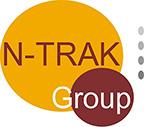




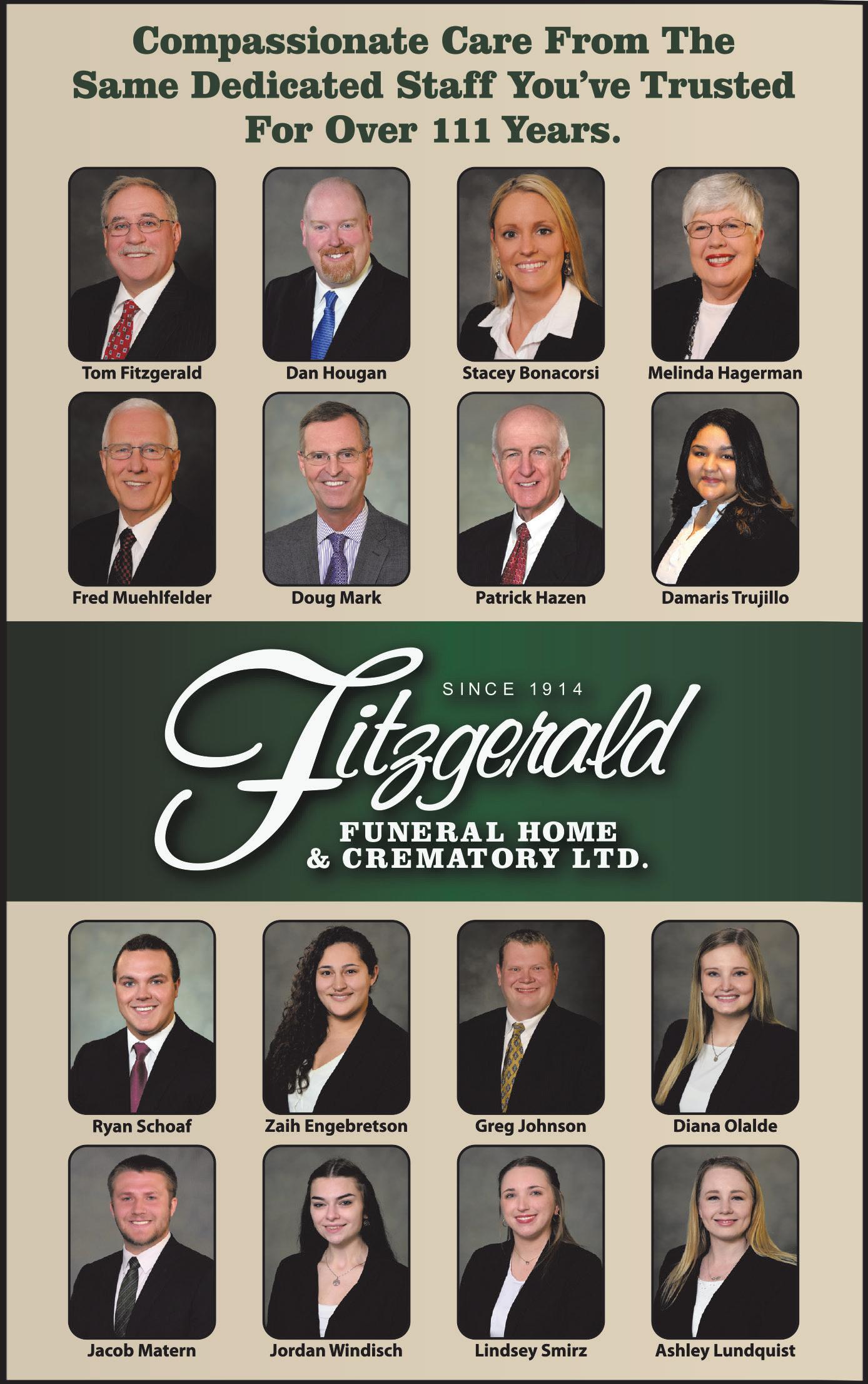

• Refine the region’s value proposition, strengthening its ability to retain, expand, and attract businesses.
The economic landscape in the Rockford Regions, and across the U.S., is evolving faster than at any time in recent history. Converging trends are reshaping how communities must approach economic development, presenting both new opportunities and emerging threats.
Here are the top reasons why now is the perfect time for GRCC to embrace a bold new vision for economic development.
1. A moment of economic transition
National and global supply chains are being redefined. Companies are reshoring, nearshoring, and diversifying operations at record levels. Federal and state programs, such as the CHIPS (Creating Helpful Initiatives to Produce Semiconductors) and Science Act, Inflation Reduction Act, and infrastructure funding, are driving place-based investment. Communities prepared with strategic priorities, projectready sites, and strong partnerships will be the ones to benefit most.
2. Industry transformation
Traditional manufacturing—long the backbone of the Rockford region’s employment base—is declining in total employment share, even as output remains strong and increases. Automation, robotics, and digital technologies are reshaping production processes, demanding new skillsets and capital investment.
3. A strong local appetite for collaboration
Leadership across the public, private, and nonprofit sectors in the Rockford Region has expressed a strong willingness to work together on shared priorities. This collaborative spirit, if translated into coordinated action, can amplify results and accelerate progress.
4. Growing competition among peer regions
Communities across the Midwest are investing aggressively in talent, site readiness, and marketing. Without a unified and proactive approach, our
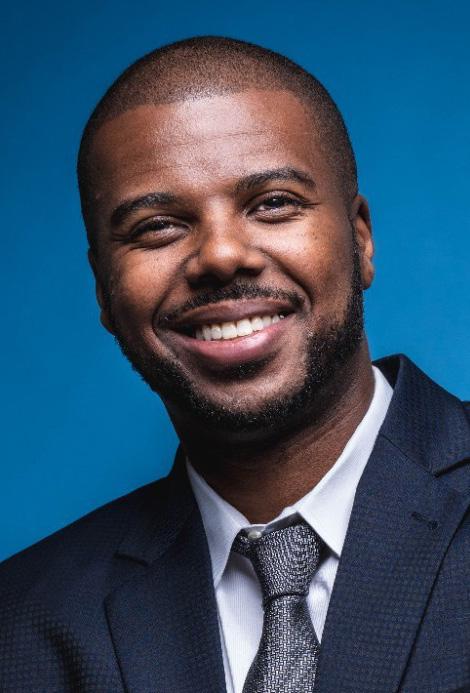
region risks falling behind competitors who are already aligning around shared strategies and measurable outcomes.
5. Evolving employer and workforce needs
Employers increasingly prioritize communities that invest in talent development, innovation ecosystems, and quality of life. By aligning education, workforce, and business strategies, the Rockford Region can better support employers today while attracting the industries of tomorrow.
6. Entrepreneurship and innovation
Growth in small, high-tech, and niche manufacturing firms is reshaping regional economies. These companies are highly mobile and rely on agile networks that can provide support, visibility, and coordination.
7. The opportunity to advance the region’s narrative
For too long, Rockford’s story has been told by others or only through its past. Through a focused economic development strategy, GRCC and its partners have the opportunity to build on the current work being done in talent attraction and quality of place initiatives (such as GoRockford’s Made for Rockford initiative) to reframe the region’s identity around its assets, resilience, and future potential—further shaping how investors, employers, and residents see our community. These trends make it clear that now’s the time to strengthen our regional economic development efforts so we can seize the opportunities that will shape our community’s future. The GRCC’s vision to relentlessly grow, develop, and support a thriving business community positions it as the leading economic development organization for Winnebago County and the Rockford Region—one that tells the region’s story, supports its employers, and drives measurable economic growth. Thanks to the input and collaboration of GRCC’s board, Economic Development Committee, and regional partners, the new GRCC economic development roadmap will position the Rockford Region to do exactly that.
(continued from page 1) v
Terrance Hall is a partner with Eight Fifteen Impact, a strategic consulting firm specializing in economic development strategy and hands-on implementation.
The Greater Rockford Chamber of Commerce is partnering with Eight Fifteen Impact to strengthen the region’s competitive position for business expansion and attraction.
By Jacqueline Lentini McCullough, Amundsen Davis
On September 19, 2025, the U.S. Department of Labor (DOL) announced the launch of Project Firewall, described as “an H-1B enforcement initiative that will safeguard the rights, wages, and job opportunities of highly skilled American workers by ensuring employers prioritize qualified Americans when hiring workers and holding employers accountable if they abuse the H-1B visa process.”
Compliance and penalties under Project Firewall
Through Project Firewall, where there is reasonable cause that an H-1B employer is not in compliance, the secretary of labor will personally certify the initiation of investigations, as opposed to the typical Wage and Hour Division (WHD) complaint-driven investigations.
Violations may result in the collection of back wages owed to affected workers, the assessment of civil money penalties, and/or debarment from future use of the H-1B program for a prescribed period of time. Additional information about the difference between a secretary-certified labor condition application (LCA) investigation and a complaint-driven investigation is contained in the WHD LCA Field Operations Handbook.
Collaboration amongst enforcement agencies
Project Firewall is a collaboration within the DOL between the Office of Immigration Policy, Employment and Training Administration, and WHD. Additionally, DOL will share information and coordinate with relevant government agencies, including the Civil Rights Division of the Department of Justice, the Equal Employment Opportunity Commission, U.S. Department of Homeland Security, and U.S. Citizenship and Immigration Services (USCIS) to combat discrimination against U.S. workers and to ensure the law is properly enforced. USCIS and DOL have already entered into a memorandum of agreement to share data between the agencies.
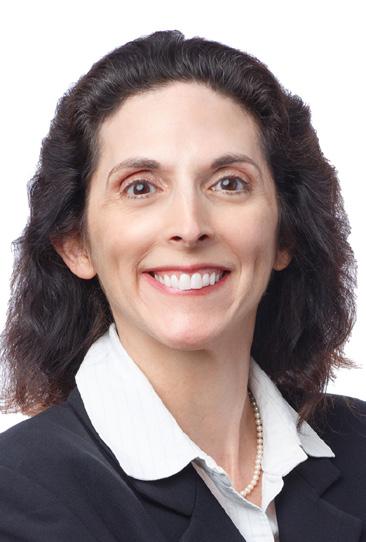
Key implications for employers
To avoid penalties, fines, or other adverse consequences under Project Firewall, employers should ensure they are in compliance with H-1B requirements. To do so, companies should:
• Take proactive compliance measures. Conduct regular audits of LCAs, job titles and descriptions, wages and benefits, and work locations.
• Keep complete, accurate records.
WHD lists the records every H-1B employer must keep and make available to it upon request. One critical recordkeeping requirement for employers is to maintain proper H-1B Public Access files, which must be created within one day of filing the LCA and include all required materials.
• Train staff on legal obligations. Provide education to HR staff on H-1B compliance requirements.
• Monitor regulatory developments. To ensure compliance with legal obligations, employers must remain up-to-date on changes to the current framework. By working with trusted legal counsel, employers can stay abreast of changes and develop strategies accordingly.
It’s important to note that during the government shutdown, DOL will not be working on Project Firewall, so now is a good time to conduct an audit and ensure compliance.
Amundsen Davis LLC is a full-service law firm comprised of more than 260 attorneys practicing from 13 offices across Illinois, Indiana, Missouri, Wisconsin, and Ohio. The firm handles the transactional, labor and employment, and litigation needs of companies across the U.S. For more information, visit www.amundsendavislaw.com.
The views expressed are those of the author(s) and do not necessarily represent those of the Greater Rockford Chamber of Commerce.

Jacqueline Lentini McCullough provides business employment immigration services to corporations and individuals, including employer or family sponsorship and naturalization. She handles all manner of employmentbased immigration case management. Contact her at 630.587.7988 or jlentini@amundsendavislaw.com.
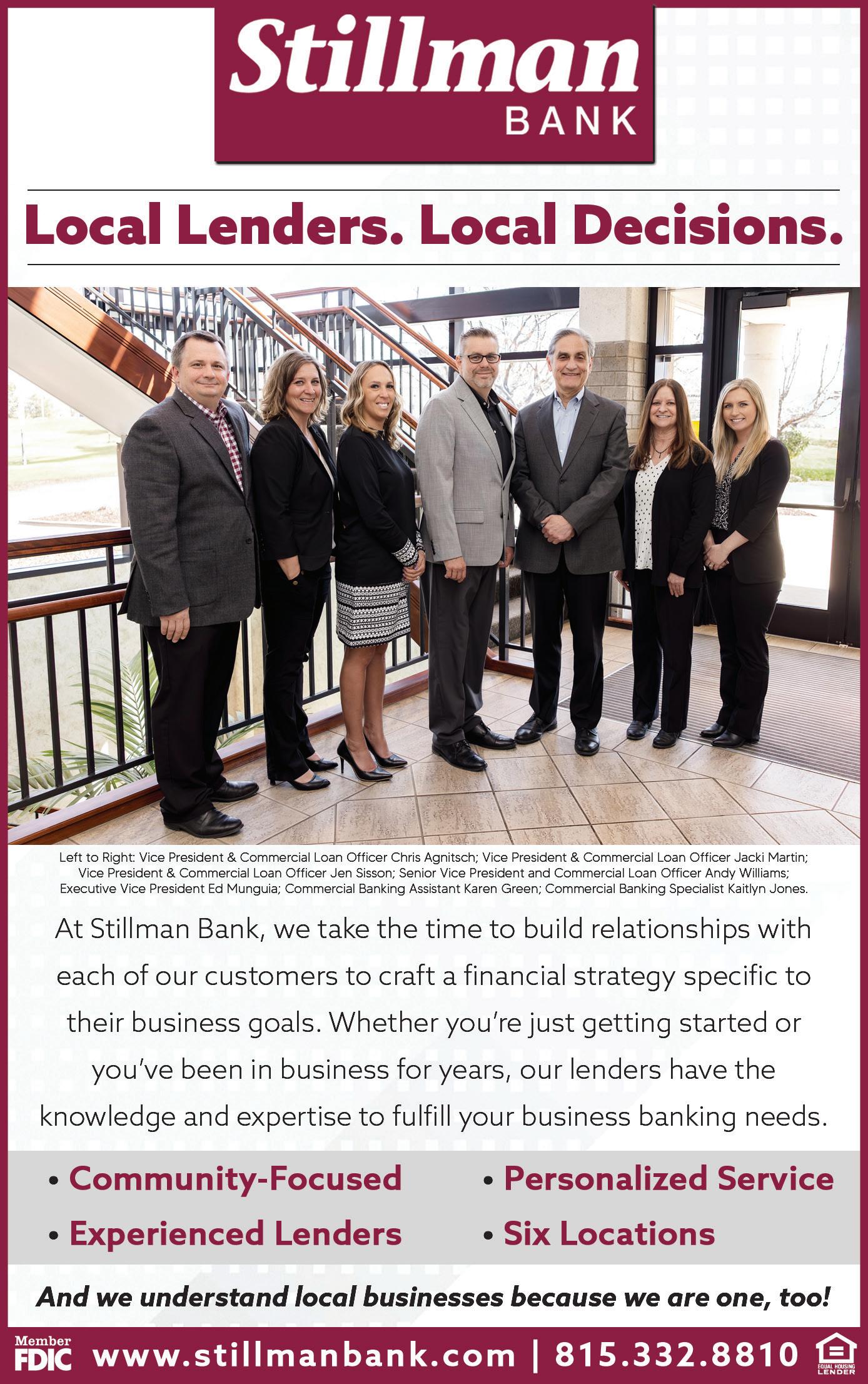
(continued from page 1)
quarterly business sentiment surveys.) It creates extra work and slows progress when time is money.
“I know many constituents feel that bureaucracy is a barrier to creating new things,” Granath said. “But it’s important to understand that some bureaucracy is needed to protect the taxpayers’ investment. We’re cautious, because we have to consider the long-term impact of a project. But we understand how frustrating it can be.”
Another potential roadblock that businesses can encounter is confusion about who owns what when it comes to the City of Rockford and Winnebago County. “When you’re in it, you understand those nuances,” Valdez said. “But I wouldn’t expect anybody else to be able to properly distinguish between a city guideline and a county guideline.”
Workforce development and a healthy talent pipeline are priorities shared by local businesses and the school board. “Obviously, businesses have a vested interest in the superintendent search. It was very important to Board President Carpenter and I that we get feedback from local businesses. The district hosted listening sessions specifically for the business community and unions,” Bennett said. (See the article on page 12 about the GRCC task force created to aid District 205 in its search.)
Some constituents mistakenly believe that a single board member can snap their fingers and make things happen. “I can connect somebody with the proper person, but I’m not involved in the day-to-day operations of Rockford Public Schools,” Bennett said. “School board members have a balcony-level view of the district, but we’re not the actors on the stage.”
It’s also helpful to remember that it takes the majority of the people on any governing board to get something done. It’s not just about individual board members wielding power.
Valdez believes that biggest misconception about the Winnebago County board is that everyone is very siloed and partisan. “My experience has been that people are more than willing to work across the aisle, especially when it comes to economic development and economic enhancement,” she said. “I think that is one of our greatest strengths in this region. And as long as we keep moving in this direction, we’re going to accomplish amazing things in the next 10 to 20 years.”
Surprisingly, all three elected leaders agreed that a phone call is one of the best ways to communicate with them.
“We get so many invitations from constituents,” Granath said. “Sometimes it can be more useful to make a phone call

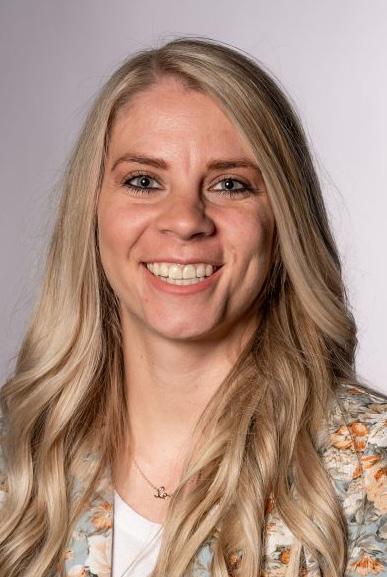
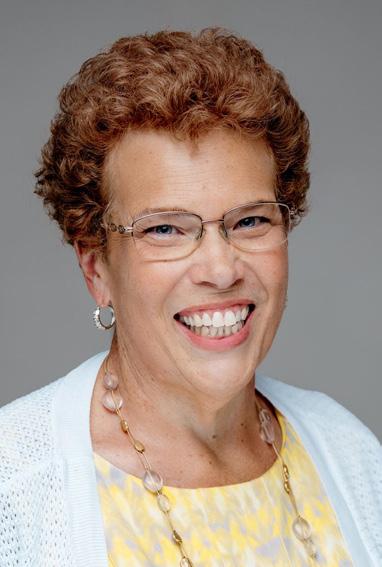
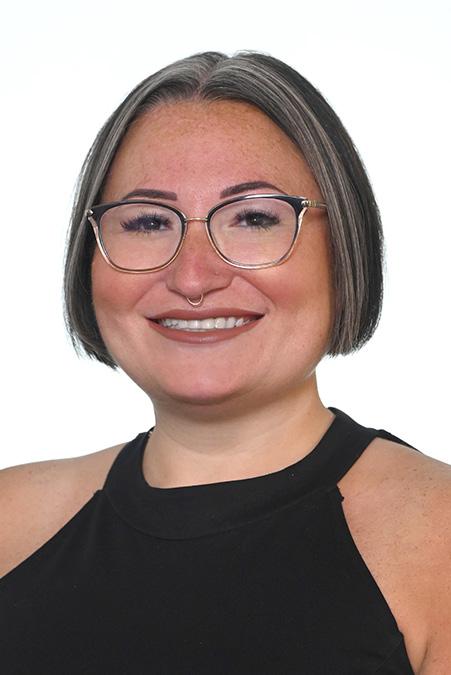
Nicole Bennett serves as vice president of the Rockford Public Schools Board of Education. She is also a licensed clinical social worker.
Dawn Granath is the 9th Ward alderwoman on the Rockford City Council. She has 25 years of experience as an educator and formerly served as president of the Rockford Education Association.
Christina Valdez serves on the Winnebago County Board as the councilwoman for the 16th Ward. She is also the finance officer for the Rockford Area Arts Council.
or invite me for a quick coffee to bring me up to speed on something. There are so many interesting things going on and so much I need to learn about. Real conversations help in that regard.”
Bennett feels that any communication is useful, whether it’s reaching out to board members directly, attending board meetings, or having a conversation at a Chamber event. “But time is limited at board meetings, so make sure your message is clear and you know what your goals are,” she said.
Making a public comment at a board meeting or council meeting may seem like overkill, but you get the benefit of addressing all of the members at once and having your remarks entered into the notes.
“I am a huge proponent of picking up the phone, but there is absolutely no wrong way to communicate—phone, text, email, in person—everything is great,” Valdez said. “Just sending your elected official a bi-annual email update helps us know what’s going on within our district and helps us identify where we may be of assistance.”
Business leaders are encouraged to let their elected officials know when they encounter obstacles or need assistance. But remember—it’s always best when a complaint comes with a potential solution. And sharing the good things that are happening can be just as instructive as pointing out the bad.
Information on becoming a vendor or contractor for Winnebago County, City of Rockford, or RPS 205
CITY OF ROCKFORD
Open bids and RFPs - rockfordil.gov/Bids.aspx
You can sign up to receive a text message or email when new bids are added.
Become a vendor or obtain Minority and Women Business Certification - rockfordil.gov/279/Purchasing
Be aware that most of the forms cannot be completed online and must be submitted via email or mail, or, in some cases, in person.
ROCKFORD PUBLIC SCHOOLS DISTRICT 205
Bids, RFPs and requests for quotations
www.rps205.com/page/bids-rfps-request-for-quotations
Rockford Public Schools partners with Bonfire to advertise and collect bids electronically.
WINNEBAGO COUNTY
Purchasing Department
wincoil.gov/departments/purchasing-department
Bids and RFPs
wincoil.gov/departments/purchasing-department/open-bids-quotes-rfps
story of resurgence in the Village of Durand
By Village of Durand Mayor Sheila Hoffman
As elected officials in local government, we step up to tackle the challenge to leave things a little better than we found them. That’s exactly what the Village of Durand has set out to do. We have completely restored our thriving business district, and by spring 2026, all downtown properties will be renovated, with each housing at least one business for the first time in nearly four decades.
Infrastructure in Durand is now capable of supporting twice the current population. Thirty-five single-family homes are planned for construction over the next five years. Amenities at Nick Saelens Park have been upgraded. Durand Community Unit School District (CUSD) 322 provides top-notch education for grades preK-12. Durand received the Illinois Department of Transportation (IDOT) 100% Local Project Funding (LPF) grant to build a safe pedestrian and bike path along Illinois Highway 70 from the town’s southern edge past the creek footbridge to the school.
So how did we bring about such dramatic change in our community? It took hard work and partnership from civic leaders, local businesses, and community champions.
The responsibilities of elected officials
Fair warning: The journey is not for the faint of heart or the weak. But one step at a time, one project at a time, consistently moving mostly forward (because you win some and you lose some), you will get there.
• Build a team of like-minded individuals who share a vision. Everyone brings their own talents and thoughts. Each think differently but all see the common goal.
• Be genuine and authentic. Do what’s right by most people. (No, you can’t make everyone happy; that’s not a thing.)
• Don’t compromise honesty and integrity, even when it would be easier to do so sometimes. The public can say anything about you, and they will, so stay transparent, then there is nothing to hide.
• Make a plan. Identify the problem areas, take note of the positive attributes, and plan.
• Find a great grant writer. This is KEY to completing projects for smaller communities.
• Don’t comingle. Keep duties segregated amongst professional
partners for accountability, i.e. engineer and grant writing.
• Create a TIF District and use it as strategically as possible.
• Create tangible change as soon as possible. Like the famous line in the 1989 film “Field of Dreams,” IF YOU BUILD IT, THEY WILL COME.
• Offer incentives. Work with investors, business owners (new and existing), and entrepreneurs to accomplish their goals and dreams— TIF, tax abatement, utility hook-ups. Be creative.
• Use all resources available to you—grants, incentives, business development districts (BDD), Illinois Municipal League conferences, meetings with other municipalities, Illinois Institute for Rural Affairs (IIRA), the county, and economic development organizations like the Greater Rockford Chamber of Commerce and tourism bureaus.
• Build relationships with business/ property owners, community members, other officials, agencies, and organizations.
• Ask questions. There is no shame in admitting that you don’t know something.
• DO NOT REINVENT THE WHEEL. Another community has already done what you want to do, reference them. Durand reached out to Beloit and the IIRA in the beginning.
On the flipside, change doesn’t happen without business leaders and community champions who share a vision. YOU bring the vision to life.
In the YouTube video, “First Follower: Leadership Lessons from the Dancing Guy” posted by Derek Sivers, we learn, “A leader needs the guts to stand alone and look ridiculous. But what he is doing is simple; it’s almost instructional. This is key. You must be easy to follow.”
This “lone nut” for Durand was Brian Steelglove, a businessman from the Chicago suburbs who settled in Lake Summerset, just 10 minutes down the road. He was excited to open a restaurant to honor his mother, The Fire Barn, and saw potential in our town and what he could bring to the community.
It wasn’t your typical, local, smalltown effort of putting a little paint on the walls and a new sign. It was true renovation, unlike any Durand had seen in well over 20 years. Brian and

his wife, Lisette, are involved with the local nonprofits Durand Area Retailers, Trades & Services (D.A.R.T.S.) and Durand Charm. They have repeated this process six times in our downtown.
Then, the square got a facelift that was 14 years in the making. An IDOT Illinois Transportation Enhancement (ITE) grant and a U.S. Department of Agriculture (USDA) Rural Business Development (RDD) grant were used to completely reimagine the downtown.
The second lesson from the dancing guy says, “Now comes the first follower with a crucial role; he publicly shows everyone how to follow. The leader embraces him as an equal, so it’s not about the leader anymore—it’s about them, plural.”
Our first followers were Bill and Bobbie Ziesk, also from the Chicago suburbs and living in Lake Summerset, swooping in to get involved with community charities, flip homes, and renovate long-term rentals. They even created a classy, vintage barber shop.
The Ziesks have completely renovated two downtown commercial spaces and attracted new businesses to fill them.
And they have two more in the works.
The final lesson from the dancing guy says, “The second follower is a turning point; it’s proof the first has done well. Now it’s not a lone nut, and it’s not two

nuts. Three is a crowd, and a crowd is news.”
For Durand, the second followers were Erik and Leah Olsen. You guessed it; they moved from the Chicago suburbs to Lake Summerset. The Olsens brought probably the most exciting change to hit Durand, ever. They created GameStar, a mini Dave & Busters of sorts. When asked why they would launch such a venture in a small town like Durand, Erik credits the renovated square and the great community.
You see, once the snowball starts rolling, it keeps rolling. The village board has wanted to stop and take a breather here and there, but the opportunities just keep presenting themselves. Tangible change … If you build it, they will come.
There are many stories, leaders and owners, wins and losses that have been left out of this ever-evolving story, because there’s just not enough space in this article. The Village of Durand is ever grateful to our business leaders, community champions, partners, and organizations who play a part in our success. We love you all.
The views expressed are those of the author(s) and do not necessarily represent those of the Greater Rockford Chamber of Commerce.
By Carol Taylor, Rockford Career College
Educators and employers alike live by the law of supply and demand. Employers demand qualified new hires and educators supply them. It’s just that simple. But is it? Where can employers go to find high-quality candidates? And how can colleges ensure they’re producing graduates who best fit employers’ needs?
According to the U.S. Bureau of Labor Statistics, employers increasingly turn to vocational colleges like Rockford Career College (RCC) to fill jobs in skilled trades, such as manufacturing, welding, and nursing—occupations currently facing severe shortages. They not only train students in the classroom, but they also offer real-life experience in the field.
Working closely with employers, job placement professionals (like me) at vocational colleges can balance the often lopsided, supply-demand equation by helping post jobs, arrange internships, hold workshops and seminars, and manage the interview process.
Modern vocational colleges also offer training in so-called soft skills, so graduates are fully prepared to transition to the workplace. Most important, they gain confidence and learn to show respect and character in the workplace.
Vocational colleges make a point of networking with local employers— from hospitals and law firms to manufacturers and repair services—to learn about the workforce landscape. They also conduct surveys to gather feedback from local employers, and they encourage employers to visit campus and classrooms to see students and faculty in action.
Recently, a representative from a local HVAC company observed a lab class at RCC, where he noticed a student who showed particular promise. He asked the student to give him a call when he was close to graduating, and that student now works for that company.
So how should employers go about forging connections with vocational schools?
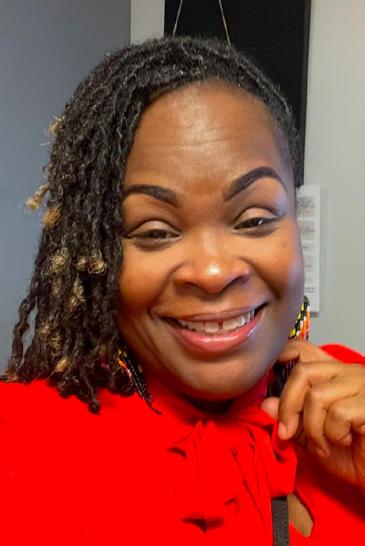
• Make sure the school is accredited.
• Contact the school’s job placement office to discuss your company’s needs.
• Visit the school to observe classes and meet with staff.
• Invite instructors or job placement counselors to visit your operation, so they understand the work environment and culture.
• Make sure the school’s talent pipeline and candidate referral process align with your needs and timeline.
In our experience, employers are looking to hire candidates faster than ever before. We might get a call from HR on a Friday saying they need to fill a position by Monday. Thanks to our flexibility and familiarity with individual students, we’re able to respond quickly.
Crusader Community Health, Bomar Heating & Cooling in Freeport, and Henning Inc. in Machesney Park are just a few of the RCC partners who recognize the value of hiring from vocational colleges.
As Apple founder Steve Jobs said, “Hiring the best is your most important task.” I feel really lucky to do what I do helping connect employers and job seekers. Job placement professionals have the chance to change lives every day, helping students get hired for great jobs that translate into lifelong careers. We also help ensure companies are amply staffed so they can operate and flourish. That’s why every opportunity to marry a graduate with an employer makes my heart go pitter-patter.
Rockford Career College offers handson education and online programs for in-demand careers. Its mission is to give students a relevant, well-rounded occupational education; provide employers with well-prepared graduates; and serve community partners.
The views expressed are those of the author(s) and do not necessarily represent those of the Greater Rockford Chamber of Commerce.
By Bridget French, Rockford Public Schools
While dual credit legislation was first created in 2010, its better-known sibling, Advanced Placement (AP), has been widely accepted as the preferred method of early college credit for decades.
About AP courses
Advanced Placement is a suite of courses managed by the nonprofit College Board, offering 38 courses in seven subject categories. AP courses mirror college courses and offer rigorous curricula. At the end of a student’s year, they take an AP exam, scoring between a one and a five on the exam. Colleges and universities in Illinois must accept a score of three or higher on the exam.
However, not all scores are created equal. Schools like Northwestern University in Chicago may accept a three on an exam on AP English literature but only accept it as elective credit. A prospective Northwestern student must earn a five, the highest score, on an AP English literature exam to be placed into higher-level English courses in his or her first year of college. In other words, it would not waive the student’s requirement to retake the same course in college.
My own son is an example of how AP courses do not always translate into college credit or advanced placement in courses. After taking a year of AP literature and AP composition and earning an “A” in both courses, he scored a two on both exams. These scores did not allow him to place out of entry-level English when he enrolled at Northern Illinois University. Had he taken the dual credit equivalents, English 101 and Literature 101, and earned a C or higher, he would have earned six college credits before enrolling at NIU.
Benefits of dual credit programs
Dual credit programs have emerged as a powerful tool in education, offering high school students the opportunity to earn both high school and college credit simultaneously. By allowing students to take college-level courses while still in high school, dual credit programs provide numerous benefits that can significantly impact students’ academic and career trajectories.
By earning college credit while still in high school, students may reduce the overall cost of their college education.

This is particularly beneficial for students planning to attend a four-year university, as they can graduate early or take fewer credits each semester, saving on tuition and other expenses.
Early exposure to college-level coursework helps students become more familiar with the expectations and rigor of higher education and increase their likelihood of success.
Amending the Dual Credit Quality Act
Rockford Public Schools partnered with lobbyists at Zephr Government Strategies to support Illinois House Bill 2967, which amends the state’s existing Dual Credit Quality Act. This amendment provides specific and clarified academic credentials for high school instructors who teach dual credit courses; requires school and community college districts to designate a liaison and begin partnership negotiations; creates a new Dual Credit Committee to ensure program quality and equity; and mandates that the Illinois Community College Board conduct a study by October 2030 to assess the impact of these changes. The amendment is important because it allows us to further our partnership with Rock Valley College and Rockford University as we collaboratively expand dual credit offerings to students while they’re in high school.
The data clearly demonstrate the growing impact of dual credit on our students’ academic success. In 2021, 528 students took at least one dual credit class. In 2024, our dual credit program saw remarkable growth, with 1,092 students enrolling, and an impressive 96% of them successfully earning both high school and transferable college credit. This success rate significantly surpasses the outcomes of our AP program, where only 52% of students achieved a passing score on the exam.
While AP courses still hold value for highly selective universities, dual credit is proving to be an effective and accessible pathway for a vast majority of our students to earn college credit and prepare for their futures.
The views expressed are those of the author(s) and do not necessarily represent those of the Greater Rockford Chamber of Commerce.
As the executive director of college and career readiness for Rockford Public Schools, Bridget French is responsible for the development, implementation, assessment, and continuous improvement of programs aimed at increasing student access to post-secondary education and employment opportunities, specifically through College and Career Academies and Career and Technical Education (CTE) programs.
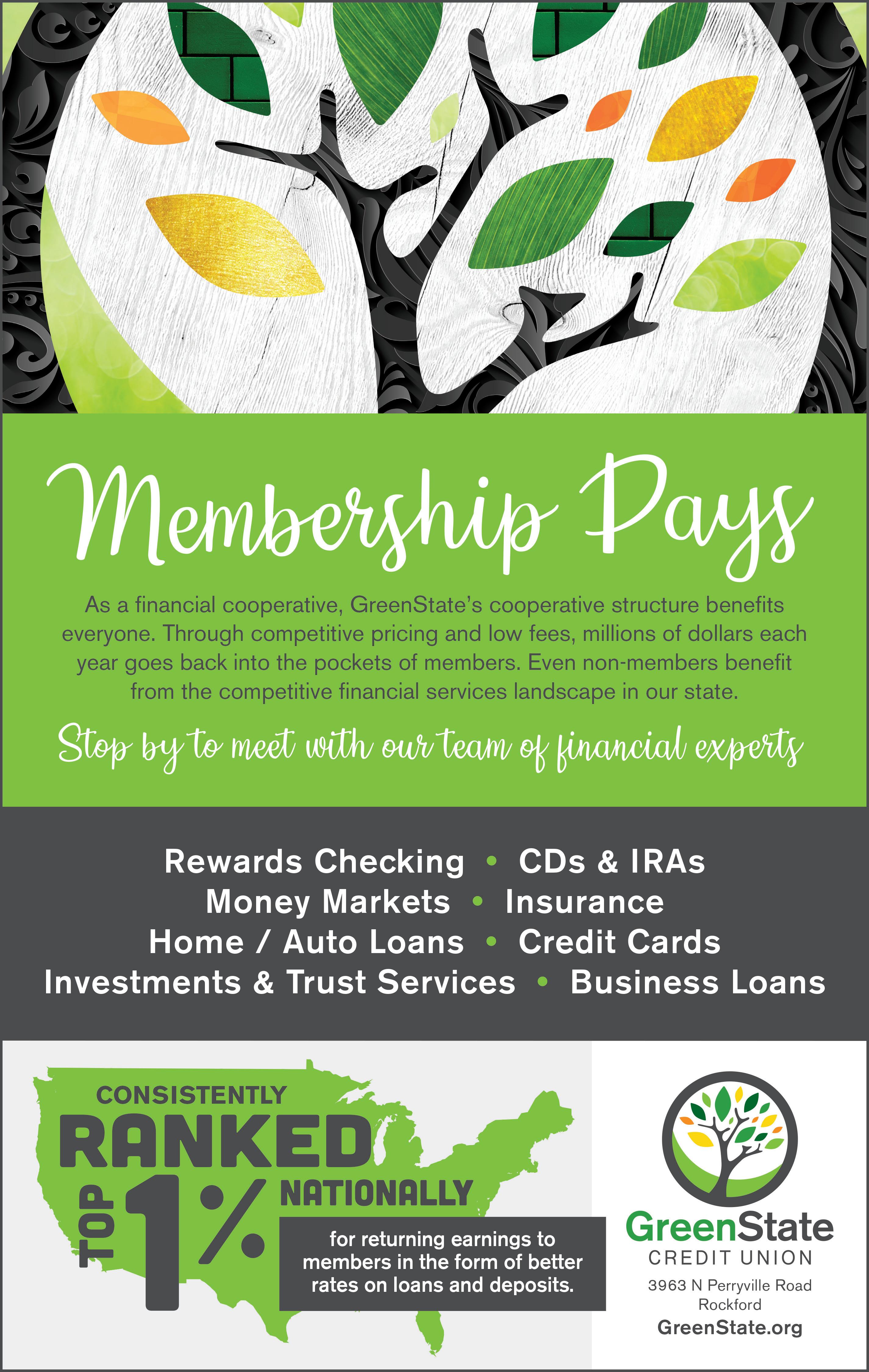
When you shop locally, a dollar does more than you think
By John Groh, GoRockford
For small retailers—the entrepreneurs who own and run independent brickand-mortar shops and don’t have a financial buffer like chain stores and online giants—the growing sense of caution in spending this November and December is make-or-break.
As we decorate our offices and homes for the season, and buy gifts for colleagues, family, and friends, we should seek out local stores. They provide the personal service and community connections that online retailers and stores in nearby cities cannot replicate. They also sustain our economy.
Annual research from American Express across the U.S. shows two-thirds of every holiday dollar spent locally funnels back into the local economy. Related studies show that dollars spent at locally owned stores recirculate through the local economy two to four times more than when they are spent with a chain or online.
Here’s how we can support independent businesses throughout Winnebago County and the Rockford Region this holiday season:
Buy gift certificates or gift cards
When showing guests around town Thanksgiving weekend and finding a gathering spot everyone enjoys—Ernie’s Midtown Pub, for example, in the Midtown district of Rockford, or The Norwegian in Rockford’s North End, for example—remember to ask if they have gift certificates or gift cards. Drop a hint about an e-gift card so out-of-town friends and family can shop local for you even after they head back home. And a purchase now of a gift card helps local restaurants as they head into their slow season at the beginning of the year.
Initiate the ripple effect
Introducing someone to (or helping them revisit) a neighborhood restaurant with a gift card gives them the opportunity to explore shops and other destinations in that area. Ernie’s is just a few doors from Three Ravens Pottery and a few blocks from Inscape Collective. The Norwegian is near boutique shopping at Rooted and Winnie Nutter, community theater at The West Side Show Room, a neighborhood bar such as The GOAT Pub and Grill, and across the street from upscale dining at Plume.

Explore downtown Rockford during Stroll on State
November 29, the Saturday after Thanksgiving, a seven-hour holiday festival turns the heart of Rockford into a movie-worthy winter wonderland. On this day, which is also Small Business Saturday, the stores that make downtown Rockford unique will be easy to seek out along the parade route.
This year, kicking off during Stroll on State and continuing throughout the holiday shopping season, there will be added visibility to downtown businesses thanks to a collaboration between GoRockford and Tad More Tailoring. Upcycled sweaters designed by Tad More Tailoring and decorated by community partners will be on display in downtown storefronts. Visitors and residents are encouraged to vote for their favorites for a chance to win a prize basket. We think this is a great way to promote sustainability this holiday season. Check out The Mercato by Lino’s
If you’re pressed for time to dine and shop, keep in mind the lineup of 15 shops in the refurbished shipping container complex in Loves Park that houses Lino’s second restaurant location. Here, before or after a meal (and perhaps quickly during), you can find micro-locations of such local favorites as Urban Farmgirl, Rockford Art Deli, Smiley’s Vintage Supply, and Bark on Mulford.
Remember our craft supply shops
When JOANN stores closed across the country early this year, many areas were left with no place to buy craft and sewing supplies. But not Winnebago County. We have three exceptional spots—The Scrap Jar, a thrift shop for art and craft supplies and fabrics in downtown Rockford; A Skein Away, a shop for knitting and crochet supplies in Roscoe; amd Bee Youtiful Sip and Stitchery, a cross-stitch and embroidery supply boutiquein Roscoe.
For suggestions in other categories, reach out to our team at GoRockford at 815-963-8111 from 8:30 a.m. to 5 p.m. weekdays or email info@gorockford.com.
The views expressed are those of the author(s) and do not necessarily represent those of the Greater Rockford Chamber of Commerce.


Federal government viewed least positively of 25 sectors by Megan
Brenan, Gallup

The farming and computer industries lead Gallup’s annual ratings of 25 key U.S. business sectors, with 60% and 59% of Americans, respectively, viewing them “very” or “somewhat” positively. The restaurant industry is the only other sector rated positively by a majority of Americans (52%) this year.
At the other end of the spectrum, the federal government has returned to the position of worst-rated sector. It displaces the pharmaceutical industry, which had occupied the lowest position for the past two years but has rebounded with an eight-percentage-point increase this year. Each of these sectors is viewed negatively by about six in 10 U.S. adults. Just one other industry, healthcare, garners a majority-level negative rating (51%).
In contrast to Americans’ ratings of other low-ranking sectors, relatively few have a “neutral” view of government and the pharmaceutical and healthcare industries. Positive ratings of the other 19 industries range from 29% to 43%.
The average positive rating across all 25 sectors measured in Gallup’s Aug. 1-20 Work and Education poll is 38%, essentially unchanged from last year’s 37% average. This marks the fifth consecutive year it has averaged under 40%. The record-low average rating was 34% in 2008, while the record high was 49% in 2017.
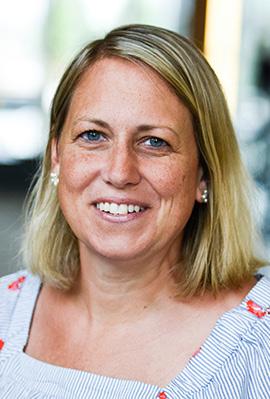
Three industries at record lows
There have been modest shifts in a number of the industries’ ratings since last year, but three have increased significantly — electric and gas utilities (up nine points), oil and gas (up eight points), and the aforementioned pharmaceutical industry (up eight points).
Ratings of three others—the movie, telephone, and television and radio industries—have slipped to their lowest points on record. The movie industry’s 31% positive rating and the television and radio industry’s 32% are both the lowest by one point. The telephone industry’s 34% rating matches the low first recorded in 2002.
Bottom line
Americans’ views of business sectors remain historically weak overall, with just farming, computers and restaurants earning majority-positive ratings this year. At the same time, several industries, including movies, television and radio, and telephones, have sunk to record lows, while the federal government again ranks as the least popular.
Read the full article and learn more about the Gallup Poll Social Series at Gallup.com.
The views expressed are those of the author(s) and do not necessarily represent those of the Greater Rockford Chamber of Commerce.
Megan Brenan is a senior editor at Gallup. Brenan uses her expertise in analysis and questionnaire design to advise on Gallup client survey projects. She also writes data-driven articles on a broad range of topics for Gallup. com, including economic, political, and business matters.
By UMB Bank GUEST COLUMNISTS
According to the Association for Financial Professionals’ (AFP) 2025 survey, 79% of treasury and finance professionals reported payments fraud attacks and attempts in 2024. To stay one step ahead of these threats, companies continue to look for strategies for preventing fraud.
From altered checks to wire transfers and corporate credit cards to employee theft, payments fraud comes in all forms. Fortunately, many businesses are more aware of the different types of fraud than ever before, and many are putting measures in place to combat the growing issue. This includes educating themselves and their staff on proactive measures they can take to minimize risk.
Here are two of the biggest issues the survey uncovered, and actions you can take to protect your business.
Ditch the paper, get a card
Checks continue to be one of the most common forms of payments fraud, with 63% of organizations being affected in 2024. And although check fraud is on the decline, it still accounts for significant financial loss for an organization when it occurs.
If you’re still using checks regularly, there are several reasons to consider a shift to electronic payment methods, such as a commercial cards program, which can meet a variety of business spending needs. In addition to fraud mitigation, commercial cards can also help businesses:
• Increase cash flow.
• Pay bills faster.
• Retain cash and float payments for longer periods.
• Participate in reward programs and receive cashback and rebates.
• Lower administrative costs by streamlining payments and reconciling employee purchases automatically.
• Save costs in transaction fees—the median cost of processing a paper check is $3, double the cost of a purchasing card transaction.
From a safety perspective, built-in protections such as EMV chips and payment controls allow administrators to closely monitor and regulate card spending, which creates a fraud risk
management infrastructure that is significantly stronger than that of check security systems.
Numbers tell the story
• 63% of respondents cite business email compromise (BEC) as the number one fraud avenue.
• Wire transfers were found to be the number one most vulnerable payment type.
• 63% of organizations experienced check fraud in 2024.
• 22% of organizations reporting payments fraud in 2024 were able to recoup up to 75% of stolen funds.
The evils of email
BEC is a form of fraud that targets employees through email to gain access to company finances and deceive individuals into making money transfers. An example of BEC is when an attacker gains access to an executive’s email account and then monitors their behavior over a period of time. The attacker will identify when the executive is traveling or most vulnerable and send a note requesting an associate make a payment or click on a malware link.
To protect your business and employees from BEC:
• Ensure your employees have the proper education and regular fraud detection training.
• Create an atmosphere where employees feel free to ask questions.
• Reduce check writing.
• Outsource payroll responsibilities.
• Have dual controls in place for all financial decisions and actions.
The bottom line
While preventative measures can help protect against fraud, it will always exist in one form or another. What you can do is educate employees, make sure they are using the most up-to-date technology, and work with your financial partner to ensure the best practices and protective measures are in place. When it comes to payments fraud, the old saying remains true, “An ounce of prevention is worth a pound of cure.”
The views expressed are those of the author(s) and do not necessarily represent those of the Greater Rockford Chamber of Commerce.
UMB offers personal, institutional and commercial banking, including treasury management and fraud prevention services for businesses. UMB operates branches throughout Missouri, Arizona, California, Colorado, Iowa, Kansas, Illinois, Minnesota, Nebraska, New Mexico, Oklahoma, Texas, and Wisconsin. For more information, contact Robin Scott, SVP, treasury management and card sales officer, in Rockford.
Earlier this year, the GRCC Board of Directors assembled a task force comprised of members from the Government Affairs and Talent Committees with the objective of capturing the voice of business in relation to the RPS205 Board of Education’s efforts to recruit a new superintendent. The selection of this new leader directly affects our largest school district’s work in preparing our future workforce. In addition, RPS205 is one of our largest employers and manages a budget of more than half a billion dollars.
Strong, well-managed schools are vital to attracting talent and businesses to the Rockford Region, so the task force members took their work seriously. They have been meeting weekly under the leadership of Paula Carynski, formerly of OSF St. Anthony, to research, discuss, and define the business perspective on what’s needed from the administrator who will assume one of the most important jobs in our region.
Recognizing that our schools are critical to business and talent retention and attraction, these expectations are prioritized based on which elements could have the greatest impact in improving our region’s largest school
district and preparing our students to enter college, career, trade school, or military.
Business community’s expectations for new superintendent, as approved by the GRCC Board of Directors:
A. Strong business acumen in managing the assets, income, and expenses of one of our largest tax-funded institutions. Understanding of property taxes as the basis of funding, including local and state regulations governing tax rates and revenue and the process for certifying the district’s annual tax levy. Success in this area is evidenced by efficient management and low tax rates that attract households to the district and talent and companies to the region.
B. Experience in addressing chronic absenteeism and strategies to employ community stakeholders and organizations in increasing student attendance. Success in this area is evidenced by improvement in the chronic absenteeism scores to exceed state averages, at a minimum.
C. Understanding of the challenging demographics of our student body and our community’s passion for working together to support our scholars, especially in training and retaining RPS
students within our workforce. Success in this area is evidenced by:
a. Elevated engagement with businesses in Illinois Board of Education pathways, Academy model, Quad programs, Instructional Council, and other areas that leverage our expertise.
b. Appointment of business representatives on Operations Committee.
c. Ninth grade on track and graduation rates that exceed state averages, at a minimum.
d. Documented post-graduation placements in college, career, trade school, or military.
D. Commitment to increasing students’ proficiency in math and English language arts. Success in this area is evidenced by achieving scores that exceed state averages at a minimum.
E. Commitment to integrating employability skills into classroom teaching and extracurricular activities with clear metrics that are regularly reported to evaluate students’ improvements. Success in this area is evidenced by collaborating with the business community to set goals and achieve targets.
F. Strength in leading a workforce that’s partly represented by a union with respect, collaboration, and a focus on students and families. Skills in negotiation, communication, and providing feedback. Success in this area is evidenced by employee retention and recruitment, strong cultures within the schools, and teacher and administrator support of the district.
In the spirit of collaboration, GRCC offers the following in support of RPS205:
• Ongoing involvement with the board of education and administration.
• Organizing a Welcoming Committee of community leaders to provide regular insight and support as the superintendent is onboarded into the role.
• Recruiting business leaders for consideration in appointed roles such as the Instructional Council and Operations Committee.
• Rallying the business community to assist with initiatives that drive improvements in the areas outlined above.

January 12/10/2025 Finances/Legal, Transfer of Wealth, Leadership Transition
February 01/10/2026 Public Safety, Physical and Cyber Security
March 02/05/2026 Marketing and Branding
April 03/05/2026 The MATH issue (mathematics in business)
May 04/050/2026 The Great Outdoors (sports, recreation, nature, outdoor occupations)
Coffee at the Chamber
Crime Fighting/Public Safety event
Leadership Rockford, Celebration of Leadership
Rockford Mayor’s Address, Spring Networking
GRCC Annual Golf Outing
June 05/05/2026 Makers and Movers (manufacturing, logistics, warehousing, distribution) Economic Summit, Networking, 40 Over 40 Reception
July 06/10/2026 Leadership
August 07/10/2026 Celebrating the 815
September 08/10/2026 Workforce and Talent
October 09/10/2026 Innovation and Technology
November 10/10/2026 Small Business and Partnerships
Founders Day, Meet the New RPS Superintendent
GRCC Annual Fundraiser and Dinner
Networking, Leadership Rockford Kickoff
Midwest Aerospace Conference (MAC2026)
Pow(H)er Conference
December 11/10/2026 TBD No events scheduled due to holidays.
Calendar subject to change. Contact editor@rockfordchamber.com to reserve article space in an upcoming issue.
Submitting an article for the VOICE is like participating in an expert panel—it’s your chance to share real-world experiences (good and bad), give advice, highlight best practices, and offer business insights that your fellow Chamber members would find beneficial.
• GRCC members may submit two business-related, thought leadership articles per year (550-650 words). Think TED Talk or LinkedIn feature.
• No self-promotion. The focus of the article should not be about your organization, product, or service. However, you may cite experiences, programs, or partnerships as examples that support your topic.
• The best articles are written in the authentic voice of the author, not AI.
• If possible, include local examples, anecdotes, and/or quotes from people in our region.
• Articles can relate to the monthly editorial theme or be of general business interest.
• All submissions will be edited for style, tone, grammar, and length when necessary.
• Include a photo of the author and a brief bio (50-word max).
• Include a company or organizational bio (50-word max).
• Send articles as a Word doc to editor@rockfordchamber.com.
• Photos may be included for consideration. Please send as attached jpg or png files.
• Deadline for submissions is the 10th of the month prior to publication.
• Contact editor@rockfordchamber.com to reserve article space in an upcoming issue.
• Write in a professional but conversational voice.
• The VOICE follows AP style (with a few exceptions). If you know what that is, please use it. If not, just know that your story will be edited to comply with those style guidelines.
• First and foremost, the VOICE is a print newspaper. If you need to cite a source, please do so in the text of the article. Newspapers don’t use footnotes, and hyperlinks don’t work in print.
• You may submit stories that were previously published as blog posts or articles provided by your company’s corporate office. Please modify with local information if possible.
To get a copy of the VOICE mailed to your business or home, email your information to info@rockfordchamber.com.
Send your announcements and press releases to editor@rockfordchamber.com.
• New hires, retirements, promotions (may include a headshot).
• Business and individual awards and recognition.
• Announcements may be included in the VOICE newspaper and/ or the VOICEnow e-newsletter.
Contact Matt Zarembski at mzarembski@rockfordchamber.com or 815-997-6083 for information about digital and print advertising opportunities.
Illinois needs to reclaim the nuclear energy leadership it held decades ago
By Michael Dunn Jr., Region 1 Planning Council
Our local elected leaders have spent the past two years working closely with ComEd and state and federal officials to develop a strategy for funding critical energy infrastructure. The key questions before us are:
• What key locations require the least investment to accommodate businesses with enormous energy needs?
• How do we work with our state and federal governments to create a regulatory environment that supports these opportunities by generating more energy and embracing new energy-generating technology?
• Most importantly, how do we ensure that these transformative investments are captured in our region?
Illinois’ reputation as a clean energy leader can be traced back to the Dresden Nuclear Power Station, the nation’s first privately-financed nuclear power plant, built in 1960 in Morris, about 100 miles south of Rockford. With the addition of Byron’s twin reactors in the 1970s, our state boasted the largest fleet of civilian nuclear reactors in the nation—13 reactors across seven sites. Nuclear power is the source of more than half of Illinois’ energy, and lawmakers in 2023 eliminated the state’s ban on construction of new nuclear reactors. Today, Illinois is the top nuclear energy producer in the U.S. with 11 reactors across six sites.
Plentiful, inexpensive, zero-carbon energy has been Illinois’ competitive economic development advantage over other states for the last 50 years. Clean energy allows Illinois to attract private investment, especially to communities that have suffered an exodus of industry and traditional manufacturing jobs. Clean energy is competitively priced, and extensive infrastructure to support it is already in place, making Illinois attractive for business relocation and expansion.
Illinois and the Rockford Region are at a turning point in defining our position in the global economy. The private sector is seeking prime mega-site locations for
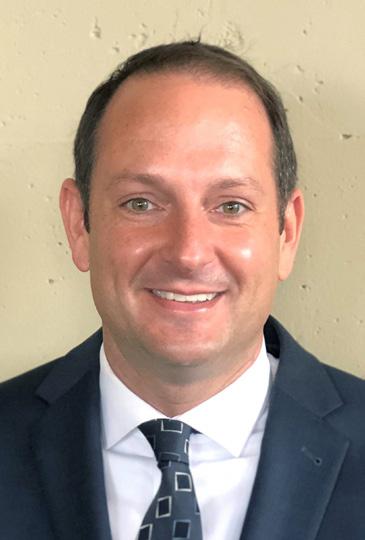
future industrial operations, and there are plenty of options to choose from across the country. Regional mega-sites are built to accommodate AI data centers, transportation ports, energy conversion facilities, and advanced manufacturing centers. These are generational economic development opportunities, representing multi-billion-dollar investments, generating revenue for our schools, parks, and local governments.
Historic levels of energy are required to fuel this economic shift. The scope and scale of infrastructure to support such massive energy loads is difficult to even conceptualize, and it must be in place five-to-seven years ahead of the industrial development that requires it. Development opportunities are already knocking on our door, and we don’t have much time to make all of the necessary infrastructure investments our region needs, especially regarding electricity supply and transmission.
What does this mean for the Rockford region? Power generation is a significant pain point, shared by local government, private companies, and energy providers. Maintaining its economic momentum will require Illinois to reclaim the nuclear energy leadership it held more than 60 years ago. Local governments must work on a parallel track with private developers to attract more clean energy assets, and state and federal governments must put supportive policies in place.
All infrastructure is critical for future development—roads, water, sewer, energy, broadband. It’s time to put a strategic focus on energy infrastructure, so our region and Illinois maintain a competitive edge for industrial development. This is the priority of Region 1 Planning Council’s board of directors, and it underpins our agency’s long-term planning for the region. A renewed focus on energy infrastructure will allow our region to win economic opportunities that that will pay dividends for future generations.
The views expressed are those of the author(s) and do not necessarily represent those of the Greater Rockford Chamber of Commerce.
By Harry Hileman, Illinois Department of Labor’s On-Site Program
In 2024, 3,445 state and federal OSHA inspections were performed in Illinois. These efforts were aimed at protecting over five million workers across the state. Although the chances of an OSHA inspection are relatively low for most employers, factors such as operating in a high-risk industry sector, elevated injury and illness rates, a severe injury, or worker complaints can attract OSHA’s attention and lead to an inspection.
OSHA’s enforcement activities include inspections that involve an investigation after an incident has occurred as well as inspections that are not triggered by a workplace injury. Both types follow these steps:
Entry
Once a worksite is selected for inspection, the OSHA compliance officer will gather information about the employer prior to arrival. It’s important to note that OSHA does not provide advance notice of inspections. Upon arrival, the compliance officer will present their credentials and request to speak with the highest-level manager present. The compliance officer should be escorted to a conference room for an opening conference.
During the opening conference, the compliance officer will explain the purpose of the inspection and gather documentation, such as OSHA logs, plans, training records, and employee lists. The scope of the inspection influences the documents requested. The opening conference is the employer’s opportunity to ask questions and get a better understanding of the inspection ahead.
The scope of the inspection influences the extent of the walkaround. For example, complaint-triggered inspections focus on specific areas, while comprehensive inspections can encompass the entire workplace. The employer representative who accompanies the compliance officer should take their own notes and photos. The officer may request clarification on work practices and training during the walkaround. They may also conduct confidential employee interviews.
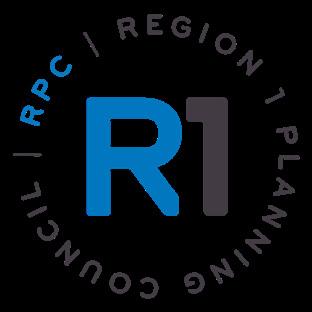

During the closing conference, the compliance officer will present their initial findings, discuss potential violations, and outline steps to immediately correct observed hazards. The officer will review employer rights and obligations, along with information on the Illinois Department of Labor’s (ILDOL) On-Site Safety and Health Consultation Program.
If violations are issued, a citation will be mailed to the address and addressee provided to OSHA during the opening conference. The abatement timeline begins once the citation packet is issued, so employers should not waste time understanding their obligations and options. Employers must post the citation packet so employees can review it. Employers can accept the results of an inspection and focus on abatement, contest citations and penalties through an informal process (discussing with an OSHA area director), or file a formal contest (administrative law process).
Once a citation is issued, the data is posted on a U.S. Department of Labor database accessible to everyone. This is one way in which predatory safety and health consultation firms may target employers after an OSHA inspection. However, the ILDOL’s On-Site Program is free of charge and helps small and medium-sized employers prepare for potential OSHA inspections and provides abatement support afterward.
The ILDOL’s On-Site Consultation Program offers free, confidential safety and health consultations to small and mediumsized businesses in Illinois, helping them identify workplace hazards, review safety/ health programs, improve compliance with federal/state OSHA standards, and reduce worker injury/illness. For more information, visit worksafe.illinois.gov or contact Harry Hileman at 217-993-2111 or harry.hileman@illinois.gov.
The views expressed are those of the author(s) and do not necessarily represent those of the Greater Rockford Chamber of Commerce.
Harry “Hap” Hileman is the Illinois Department of Labor’s On-Site marketing/outreach coordinator. He has worked as an Illinois OSHA safety inspector, as a safety specialist with the Illinois Army National Guard, and as a private industrial tank manufacturer. He earned a master’s degree from the U.S. Army Command and General Staff College.

Visit dceo.illinois.gov/businesshelp/getassistance for live links and more information.


By Kierra Ridder, DC, Spine and Body Renewal
Government organizations face unique challenges, such as limited budgets, strict accountability, and the ongoing need to reduce healthcare and workers’ compensation costs. One of the most common and costly issues these agencies face is the toll of musculoskeletal disorders on their workforce.
Employees in these roles face unique risks. Some work long hours at desks, leading to posture-related strain, while others in law enforcement, public works, or maintenance put their bodies through repetitive, high-impact tasks. Both groups are vulnerable to musculoskeletal disorders, which can quickly escalate into chronic pain if not addressed early. These health challenges don’t just affect the individual, but they can ripple outward, influencing the quality of the public services being provided.
Musculoskeletal disorders, including back pain, neck pain, and headaches, account for 364 million lost workdays in the U.S. every year, according to Bone and Joint Initiative USA, “The Burden of Musculoskeletal Diseases in the United States, 4th Edition, 2020.” For employers, this can mean billions of dollars in direct and indirect costs. Workers’ compensation claims for musculoskeletal injuries alone can reach tens of thousands of dollars per case, according to WorkCare, Inc. “Musculoskeletal Disorders in the Workplace: Prevention and Management Strategies, 2022.”
For government agencies already under financial pressure, these expenses can drain resources, productivity, service delivery, and employee morale. By contrast, the cost of a chiropractic visit can be a fraction of the price of advanced imaging, prescription drugs, or surgery, making it a financially responsible option for organizations tasked with managing taxpayer dollars wisely.
While pain relief is a benefit, chiropractic focuses on spinal alignment to improve overall body function. When the spine is aligned, the nervous system can more effectively send and receive signals, improving healing and reducing

stress throughout the body. This means that spinal health impacts more than comfort; it influences energy, focus, and resilience. This shift in perspective matters for agencies striving to maintain a healthier, more productive workforce.
Among the various chiropractic methods, the National Upper Cervical Chiropractic Association (NUCCA) technique focuses on correcting the atlas, the top bone in the spine, using a precise and low-force adjustment with no popping, twisting, or cracking. NUCCA uses imaging and detailed analysis to make each adjustment specific to each patient and their unique misalignment. With this approach, NUCCA practitioners can address the symptoms in the body effectively while only contacting one spinal segment. The precision of the adjustment helps the body to heal and can lead to more lasting relief and fewer adjustments.
NUCCA is well suited for people of all ages and activity levels, making it an inclusive option for diverse workforces, aligning with government wellness goals that focus on prevention, accountability, and sustainable health outcomes. It provides a safe and drug-free way to manage pain while also helping to prevent it in the first place. By focusing on prevention, agencies can reduce the number of sick days their employees take and limit the need for expensive workers’ compensation claims tied to pain and stress-related injuries. Supporting spinal health can also improve employee morale, mental focus, and overall workplace satisfaction.
Government organizations are constantly asked to do more with less. By investing in preventative healthcare strategies through chiropractic, they can protect their budgets, enhance employee wellbeing, and ultimately improve their capacity to serve the public.
The views expressed are those of the author(s) and do not necessarily represent those of the Greater Rockford Chamber of Commerce.
After finding relief from scoliosis, chronic pain, and stomach issues through NUCCA care, Kierra Ridder, a graduate of Palmer College of Chiropractic, was inspired to help others experience the same. She now provides NUCCA care at Spine and Body Renewal in Rockford and is advancing her expertise through NUCCA’s rigorous certification program.
new regulations may affect high earners 50+
By Savant
For decades, one of the most valuable perks for workers nearing retirement has been the ability to make extra catchup contributions to their employersponsored retirement plans, often on a pre-tax basis. These additional contributions helped millions boost savings while trimming taxable income during peak earning years.
That familiar strategy will change in 2026. Under the SECURE 2.0 Act, the IRS finalized rules that require certain high earners to make those catch-up contributions on a Roth (after tax) basis instead. This shift marks the first time the tax code mandates Roth treatment for retirement savings, and it could affect tax planning, income thresholds, and retirement strategy.
What’s changing and who’s affected
Under the final regulations, if your prior year W-2 wages exceed $145,000 (indexed for inflation), you must make all 401(k), 403(b), or governmental 457(b) catch ups as Roth contributions. In other words, you’ll pay the tax now instead of later. This determination is based on FICA covered W-2 wages, meaning it reflects only your employerrelated compensation.
For instance, if you typically used pretax catch ups to manage your adjusted gross income (AGI), expect less AGI “shelter” from 2026 onward. That can affect income-sensitive items, such as Medicare’s income-related monthly adjusted amount (IRMAA) brackets or other phase outs, making proactive planning essential.
How much can you save now?
For 2025, you can defer up to $23,500 to a 401(k). The standard catch up for age 50+ remains $7,500, and there’s a new “super catch up” of $11,250 for those age 60 to 63 (if your plan allows it).
What if my plan doesn’t offer Roth?
Plans without a Roth feature block participants from making catch ups until the sponsor adds the feature. The good news is that Roth access is already widespread. Among large recordkeepers, approximately 86% of plans allow Roth contributions, according to Vanguard. Why this may still be a win
Mandatory Roth catch ups can provide tax diversification:
• Tax-free income later. Roth dollars compound tax free and can be withdrawn tax free if rules are met— useful when required minimum distributions (RMDs) from pre-tax accounts inflate taxable income.
• Brackets and surcharges. Paying tax
now may affect future modified AGI and could influence RMD related bracket changes or surcharges such as IRMAA.
• Estate planning implications. Roth assets can provide tax-free inheritance potential, while pretax balances may require taxable withdrawals by beneficiaries.
Moves to consider in 2025 and 2026
1. Max this year’s limits. Confirm whether your plan supports the age 60 to 63 $11,250 super catch up for 2025, and adjust payroll deferrals now so you don’t leave money on the table.
2. Turn on “Roth readiness.” Verify your plan’s Roth feature and confirm how your employer will apply the W-2 wage test once the rule takes effect in 2026. If your plan doesn’t offer Roth yet, ask your human resources department about timing.
3. Coordinate taxes. Because Roth catch ups won’t reduce current year taxable wages, revisit withholding, estimated taxes, charitable bunching, and other strategies to manage AGI in high income years.
4. Right size your account “location.” Aim for a balanced mix across pre tax, Roth, and taxable accounts. A diversified tax base gives you more levers to pull for cash flow and bracket management in retirement.
5. Evaluate alternatives. When your plan limits features, explore mega backdoor Roth (after tax 401(k) contributions with in plan Roth conversion), traditional “backdoor” Roth IRAs, or disciplined taxable investing.
The bottom line
Pre-tax catch ups have been widely used, but beginning in 2026, certain high earners will be required to make these contributions as Roth-only. Use the time before 2026 to review contribution options, verify your employer’s Roth setup, and evaluate potential tax planning considerations. This shift may provide additional options in retirement and potentially influence the after tax composition of your savings.
This material is for educational purposes only and is not tax, legal, or investment advice. Consult your tax advisor and financial planner about your specific situation and the latest IRS guidance.
The views expressed are those of the author(s) and do not necessarily represent those of the Greater Rockford Chamber of Commerce.

Savant Wealth Management is a leading independent, nationally recognized, fee-only firm serving clients for over 30 years. As a trusted advisor, Savant Wealth Management offers investment management, financial planning, retirement plan and family office services to financially established individuals and institutions. Savant also offers corporate accounting, tax preparation, payroll and consulting through its affiliate, Savant Tax & Consulting.

$1.5 billion needed to cover Illinois transit agencies
By Ravi Mishra, illinoispolicy.org
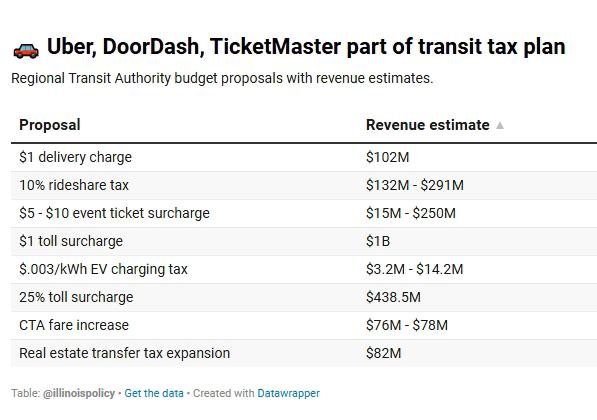
New tax and fee hike proposals on DoorDash, Uber, Ticketmaster, and toll roads could hit Illinoisans to cover shortfalls in the Regional Transit Authority (RTA) budget. The RTA, which oversees the Chicago Transit Authority, Metra and Pace, faces a looming budget crisis as federal pandemic funds run dry.
Revenue options include:
• A $1 surcharge on all tolls. Revenue estimate: $1 billion.
• A $1 delivery charge for delivery orders over $100, excluding pharmaceuticals and groceries to fund public transit. Revenue estimate: $102 million.
• A 25-cent increase in CTA fares. Revenue estimate: $76 million to $78 million if 2025 CTA fare trends hold steady.
• A 10% tax on all rideshare trips in the RTA region (Cook and collar counties) to fund public transit. Revenue estimate: $132 million to $291 million.
• A ticket price surcharge of $5-10 would be added to tickets at venues that contain more than 10,000 people. Revenue estimate: $150 million to $250 million.
• A 25% surcharge on tolls, charged once per day, which would increase the average cost of tolls by $0.60 to fund public transit. Revenue estimate: $438.5 million.
• A fee of $0.03 per kw/h tax on electric vehicle charging at public chargers to fund public transit. Revenue estimate: $3.2 million to $14.2 million with increased adoption of electric vehicles.
• An extension of the Chicago Real Estate Transfer Tax to the collar

counties, which taxes $1.50 for every $500 during the transfer of a property to fund public transit. Collar county dollars would be used for Metra and Pace transit needs, not for the CTA. Revenue estimate: $82 million.
• A one-time transfer of funds from the Illinois Road Fund to fund public transit.
At the time this article was written, these proposals were being discussed by the Illinois General Assembly during the fall veto session. While a bill had been filed and transit funding was clearly on the agenda, there was no confirmation that it had been placed on the calendar for a vote during the final days of the veto session.
The views expressed are those of the author(s) and do not necessarily represent those of the Greater Rockford Chamber of Commerce.
Ravi Mishra is a policy researcher at Illinois Policy Institute. He researches housing affordability, poverty reduction, and tax policies in Illinois. He has a bachelor’s degree in applied mathematics from the University of Connecticut and a master’s degree in economics from the University of Missouri.

PsiQuantum broke ground on the first facility to be built at the Illinois Quantum and Microelectronics Park (IQMP) at Quantum Shore on Chicago’s South Side. This marks the official buildout of stateof-the-art facilities that will soon bring the park to full scale.
Anchor tenant PsiQuantum will house the first utility-scale, error-corrected quantum computer at the park. The park will also be home to a growing roster of global companies including IBM, Diraq, and Infleqtion.
“Thanks to strong support from the State of Illinois, we are breaking ground on the largest quantum computing project in the United States as the anchor tenant at the Illinois Quantum and Microelectronics Park,” said Prof. Jeremy O’Brien, PsiQuantum co-founder and Chief Executive Officer. “We are proud to be building America’s first utilityscale quantum computer on Chicago’s South Side, where we will unlock the world-changing potential of quantum computing.”
The IQMP is a first-of-its-kind park built for quantum technology scale-up and related advanced microelectronics research and development. It is designed to support the full ecosystem
of companies, researchers, suppliers, end users and other partners working to accelerate the development and commercialization of quantum technologies, which have the potential to solve some of humanity’s greatest challenges, including breakthroughs in health care, energy, the climate crisis, transportation, financial services and agriculture.
In addition to the $500 million investment in IQMP, Illinois previously invested $200 million to support the Chicago Quantum Exchange, the first state to make that large of a commitment to quantum—a move that cemented Illinois’ leadership nationally and attracted federal research dollars.
Since the IQMP and anchor tenant PsiQuantum were announced last year, the State of Illinois, Illinois Department of Commerce and Economic Opportunity (DCEO), Illinois Economic Development Corporation (Illinois EDC), City of Chicago, Cook County government and other partners on Team Illinois have already recruited additional pioneering companies as tenants at the park. These include:
• IBM will house its state-of-the-art Quantum System Two Computer in
the park and will collaborate with the State to build the National Quantum Algorithm Center at the IQMP.
• Australian firm Diraq was recently awarded a DARPA Quantum Benchmarking Initiative Stage A contract. While IQMP is under development, Diraq will begin work through the park’s On-Ramp Program, using interim lab space and specialized equipment.
• Infleqtion will headquarter its global quantum computing operations at the IQMP as part of a $50 million investment to develop a utility-scale, neutral atom quantum system, which includes design and development of the next generation of Infleqtion’s Sqale quantum computer.
• Under DARPA’s Quantum Proving Ground (QPG) program, members of the quantum research and development community who secure competitively awarded DARPA funding will conduct their work at the park, using shared facilities while helping to offset infrastructure costs.
• National Quantum Algorithm Center (NQAC) is a signature initiative housed at IQMP that brings together quantum algorithm experts, hardware providers, software developers, and end users from across industries. The NQAC will serve as a central gateway for companies to tackle real-world challenges, develop
quantum algorithms, and access cutting-edge quantum resources. Together, these commitments alone make IQMP the largest concentration of quantum activity in North America and signal the momentum building behind Illinois’ leadership in this space. The IQMP’s economic impact on the Chicago region could exceed $20 billion in the coming years while creating thousands of jobs. To build on this momentum, IQMP launched an On-Ramp program that allows future tenants to join Chicago’s quantum ecosystem before the campus is complete, working from a local innovation facility, collaborating with partners, and establishing their presence in the region.
“Quantum technology will help solve some of the world’s biggest challenges, and the groundbreaking at the Illinois Quantum and Microelectronics Park cements Illinois as the center of this revolutionary industry,” said Mark Denzler, president and CEO of the Illinois Manufacturers’ Association. “This technology is particularly impactful for manufacturing, which generates more than $580 billion for the state’s economy each year. Quantum computing will lead to breakthroughs in the creation of life-saving drugs, chemicals, energy and cybersecurity, unleashing greater economic potential while creating a better, brighter world.”



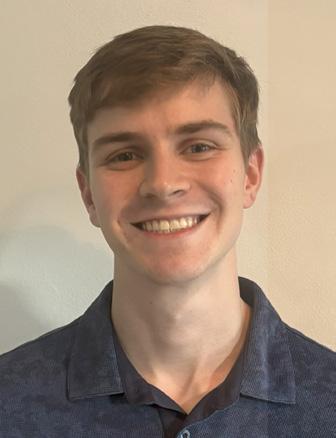
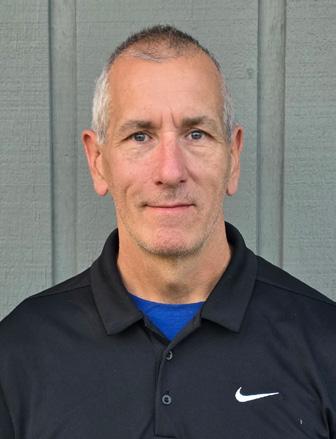


GoRockford (Rockford Area Convention & Visitors Bureau) announced new members and officer elections for its 2025-2026 board of directors. Newly elected board members are Jennifer Furst, president of Furst Staffing, and Chintan Thakkar, CHA, CHCS, president and CEO of Decorum Management Group & Days Inn by Wyndham Rockford. New board officers are:
• Chair: Geno Iafrate, president, Hard Rock Casino Rockford
• Vice chair: Tiana McCall, MBA.
• Treasurer: Mick Gronewold, PE, Midwest Platform CEO, Trilon Group.
• Secretary: Dana Martin, director of people operations, Rosecrance Behavioral Health
• Immediate past chair: Carol Schuster, MS, RHIA, assistant dean of operations, University of Illinois College of Medicine Rockford
The GoRockford Charitable Foundation reappointed Rebecca Francis, MPA, founder and lead consultant, Ignite Change Solutions, to a three-year term.
The Alpine Kiwanis Club installed new board officers for the October 2025-September 2026 year:
• Roxanne Vanderheyden, president.
• Ben Shaw, president-elect.
• David O’Connor, vice president.



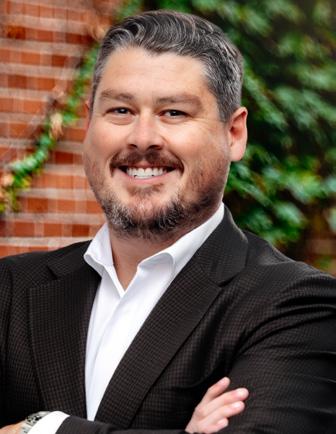

• Pat Kasmar, club secretary.
• Kathy Vigna, membership secretary and administrative treasurer.
• John Spitzer, charities treasurer.
• Ann Bruce, immediate past president.
New board members are Bruce Erickson, Mary Kowing, Claudi Midderhoff-Robinson, and Rhonda Greer Robinson.
Spine and Body Renewal welcomed Greta Fryer (1), CIHC, to their team.
Rockford Mutual Insurance Company welcomed Sam Susek (2) as claims representative and Cole Hultman (3) as claims customer service representative. RMIC also promoted Tammy Hawks to senior accountant.
Forest City Gear congratulates Ingrid West (4) purchasing and expediting coordinator, on her retirement after 14 years of dedicated service. Gene Fann (18), gear technology manager with Forest City Gear, transitioned to partial retirement after nearly 40 years with the company.
Mercyhealth welcomed Murtaza Mirza (5), MD, board certified cardiovascular disease, fellowship trained cardiologist, to the staff at Mercyhealth Heart and Vascular Center, 8201 E. Riverside Blvd.,



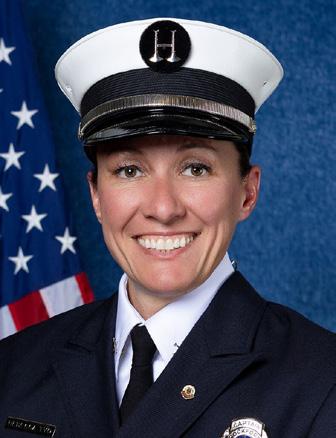

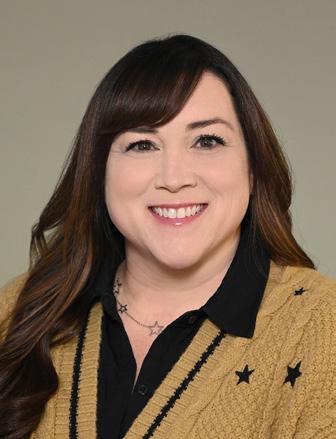

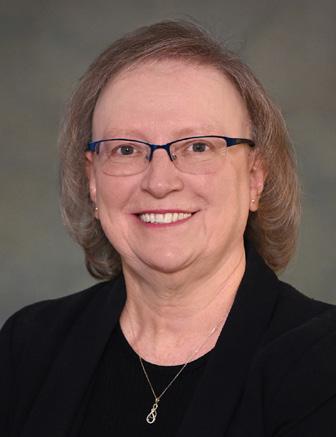

Rockford; Joshua Malinis (6), DO, internal medicine doctor, to Mercyhealth Roscoe, 5000 Prairie Rose Dr., Roscoe; and Jibril AshiruBalogun (7), MD, emergency medicine and MD-1 Emergency Response Program physician, to the Mercyhealth Prehospital and Emergency Services Center, 8201 E. Riverside Blvd., Rockford.
OrthoIllinois added Roel Sanchez, MD, to its Rockford rheumatology clinic.
The Rockford Fire and Police Commission voted unanimously to appoint Rebecca Tyo (8) as the next Rockford Fire Department chief.
Absolute Grinding and Manufacturing promoted Nate Geschel (9) to plant manager, Dan Alita (10) to business operations manager, and Mike Dixon (11) to vice president.
Chartwell Agency welcomed Chris Brennan (12) as chief administrative officer.
CoyleKiley Insurance welcomed Sharsten Cravens (13) and Tracey Phillips (14) to its client services team.
Fehr Graham promoted Emily Massingill (15) to pursuits manager.
Kirsten Peterson (17), human resources generalist at Fehr Graham, earned the HR generalist certification from the Academy to Innovate HR.
Forest City Gear recognized Mike Miller (25 years) and Bernard Lamm (20 years) for their long-term dedication to the company.
The OSF HealthCare (19) Foundation was awarded the Angel Award by Carpenter’s Place during the organization’s 25th annual fundraising event.
The Chicago Rockford International Airport (RFD) (20) was named the Primary Airport of the Year by the Illinois Department of Transportation (IDOT), Division of Aeronautics.
Kathy Yocum (16), vice president and director of retail banking at Stillman Bank, was named the 2025 Woman of the Year by the Illinois Bankers Association. Six students were awarded scholarships from the Mercyhealth Development Foundation. Mercyhealth School of Sonography scholarship recipients: Jocelyn Flores, Capron; Adrianne Garduno, Freeport; Jasmine Halbach, Janesville; and Morgan Mitchell, Rockford. Mercyhealth School of Radiography scholarship recipients: Kayla Castro, Rockford, and Anabith Estrada, Belvidere.
Rockford Housing Authority (RHA) secured a $250,000 HUD Safety & Security Grant to upgrade electrical systems at Park Terrace.
The 2025 Small Business Cybersecurity Guide from Comcast Business is available free at business.comcast.com/learn/internet/securityedge#resources
Court Street United Methodist Church will distribute free turkey dinners and winter clothing from 11 a.m. to 1 p.m. on Thanksgiving.
The Center for Sight & Hearing now has walk-in hours for its hearing clinic at 8038 Macintosh Lane in Rockford. For more information visit cshil.org or call 815-332-6800. Vision clinic walkin hours are determined by patient demand.
Forest City Gear raised approximately $5,300 at its second annual Golf Play Day at The Ledges Golf Course. The funds will help sponsor scholarships through the American Gear Manufacturers Association and the Rock River Valley Tooling & Machining Association
Savant Wealth Management acquired Evanstonbased Gryphon Advisors, a fee-only registered investment adviser with about $557 million in assets under management. The acquisition gives Savant an eighth office in the Chicagoland area and supports the firm’s presence in 20 states.
Pearson Plumbing & Heating acquired Atlas Plumbing, a well-known Rockford plumbing company.
Rockford Promise scholarship applications are now open. Local graduating high school seniors can apply for a college scholarship to Rockford University, Rock Valley College, Northern Illinois University, or Saint Anthony College of Nursing at rockfordpromise.org/apply-scholarship Eligibility requirements apply. Applications close Feb. 5, 2026, at 5 p.m.
GoRockford, Baseball For All, and the Rockford Park District announced that the Rockford Region will host the 11th annual Baseball For All Nationals July 19–25, 2026, during the same week as the WBSC Women’s Baseball World Cup group stage.
GoRockford also announced that visitor spending in Rockford and Winnebago County increased to $523.4 million in 2024, up from $515.4 million in 2023, marking a 1.5% year-over-year increase, according to the 2024 Illinois Tourism Economic Impact Report, prepared by Tourism Economics, a division of Oxford Economics, for the State of Illinois.
Rockford Mayor Tom McNamara proclaimed September 26 “NICNE Day” in honor of the Northern Illinois Center for Nonprofit Excellence’s (NICNE) 20th anniversary.
Rockford Mutual Insurance Company launched commercial auto coverage in Michigan, effective immediately.
Rock & Roll Institute, a music education and performance nonprofit, announced a collaboration with Hard Rock Casino Rockford
1. Publication Title: The VOICE of the Rockford Business Community
2. Publication Number: 784-120
3. Filing Date: 9/17/2025
4. Issue Frequency: Monthly
5. Number of Issues Published Annually: 12
6. Annual Subscription Price: $25.00
7. Complete Mailing Address of Known Office of Publication: 308 W. State St., Ste. 190, Rockford, IL 61101-1104 Winnebago County.
8. Complete Mailing Address of Headquarters or General Business Office of Publisher: 308 W. State St., Ste. 190, Rockford, IL 61101-1104 Winnebago County.
9. Publisher: Greater Rockford Chamber of Commerce, 308 W. State St., Ste. 190, Rockford, IL 61101-1104. Editor: N/A
Managing Editor: Doug Hessong, same as above.
10. Owner: Greater Rockford Chamber of Commerce
Complete Mailing Address: 308 W. State St., Ste. 190, Rockford, IL 61101-1104.
11. Known Bondholders, Mortgagees, and Other Security Holders Owning or Holding 1 Percent or More of Total Amount of Bonds, Mortgages, or Other Securities.
Full Name: N/A
Complete Mailing Address: N/A
12. Tax Status (For completion by nonprofit organizations authorized to mail at special rates.) The purpose, function, and nonprofit status of this organization and the exempt status for federal income tax purposes: Has Not Changed During Preceding 12 Months.
13. Publication Title: The VOICE of the Rockford Business Community
14. Issue Date for Circulation Data: September 2025
15. Extent and Nature of Circulation: Chamber members and distribution sites in the community.
a. Total Number Copies (Net Press Run): Average No. Copies Each Issue During Preceding 12 Months: 5,958
No. Copies of Single Issue Published Nearest to Filing Date: 6,000
b. Legitimate Paid and/or Requested Distribution (By Mail and Outside the Mail): (1) Outside-County Paid/Requested Mail
Subscriptions Stated on PS Form 3541: Average No. Copies Each Issue During Preceding 12 Months: 285
No. Copies of Single Issue Published Nearest to Filing Date: 306
(2) In-County Paid/Requested Mail Subscriptions Stated on PS Form 3541: Average No. Copies Each Issue During Preceding 12 Months: 2,551
No. Copies of Single Issue Published Nearest to Filing Date: 2,548 (3) Sales Through Dealers and Carriers, Street Vendors, Counter Sales, and Other Paid or Requested Distribution Outside USPS®: Average No. Copies Each Issue During Preceding 12 Months: N/A
No. Copies of Single Issue Published Nearest to Filing Date: N/A
(4) Requested Copies Distributed by Other Mail Classes Through the USPS (e.g. First-Class Mail®): Average No. Copies Each Issue During Preceding 12 Months: N/A
No. Copies of Single Issue Published Nearest to Filing Date: N/A
c. Total Paid and/or Requested Distribution [Sum of 15b (1), (2), (3), and (4)]: Average No. Copies Each Issue During Preceding 12 Months: 2,836
No. Copies of Single Issue Published Nearest to Filing Date: 2,854
d. Nonrequested Distribution (By Mail and Outside the Mail) (1) Outside County Nonrequested Copies Included on PS Form 3541: Average No. Copies Each Issue During Preceding 12 Months: N/A
No. Copies of Single Issue Published Nearest to Filing Date: N/A (2) In-County Nonrequested Copies Included on PS Form 3541: Average No. Copies Each Issue During Preceding 12 Months: N/A
No. Copies of Single Issue Published Nearest to Filing Date: N/A (3) Nonrequested Copies Distributed Through the USPS by Other Classes of Mail (e.g. First-Class Mail, nonrequestor copies mailed in excess of 10% limit mailed at Standard Mail® or Package Services rates): Average No. Copies Each Issue During Preceding 12 Months: N/A
No. Copies of Single Issue Published Nearest to Filing Date: N/A 4) Nonrequested Copies Distributed Outside the Mail (Include pickup stands, trade shows, showrooms, and other sources):
Average No. Copies Each Issue During Preceding 12 Months:
2,680
No. Copies of Single Issue Published Nearest to Filing Date: 2,600
e. Total Nonrequested Distribution [Sum of 15d (1), (2), (3), and (4)]: Average No. Copies Each Issue During Preceding 12 Months: 2,680
No. Copies of Single Issue Published Nearest to Filing Date: 2,600
f. Total Distribution (Sum of 15c and 15e): Average No. Copies Each Issue During Preceding 12 Months: 5,516
No. Copies of Single Issue Published Nearest to Filing Date: 5,454
g. Copies not Distributed: Average No. Copies Each Issue During
LIVE to host its winter camp, Jan. 2, 2026, on the LIVE stage.
Rockford Park District’s Canine Corners is looking for volunteers who love dogs and meeting people to help keep its dog parks fun and welcoming. Contact Faye McManus at fayemcmanus@rockfordparkdistrict.org
UMB Financial Corporation successfully completed its systems and brand conversion of Heartland Financial USA, Inc. (HTLF) following its acquisition of the organization.
Rockford Symphony Youth Orchestra announced the winners of the 2025 Concerto Competition:
First place - Kenneth Gallwas, a 17-year-old pianist from Elmhurst, Illinois.
Second place - Cecilia O’Malley, a 17-year-old violinist from Wheaton, Illinois.
Third place - Mina Pollack, a 15-year-old French horn player from Chicago.
Honorable mention - Levin Zhang, a 13-yearold pianist from Verona, Wisconsin.
The Natural Land Institute’s Legacy Tree Program Tree of the Month is a honey locust in Deer Run Forest Preserve in Cherry Valley.
OSF HealthCare introduced fetal and maternal monitoring in its labor and delivery units, enhancing traditional bedside care with advanced technology and expert support.
Preceding 12 Months: 442
No. Copies of Single Issue Published Nearest to Filing Date: 546
h. Total (Sum of 15f and g): Average No. Copies Each Issue During Preceding 12 Months: 5,958
No. Copies of Single Issue Published Nearest to Filing Date: 6,000
i. Percent Paid and/or Requested Circulation (15c divided by 15f times 100): Average No. Copies Each Issue During Preceding 12 Months: 51.41%
No. Copies of Single Issue Published Nearest to Filing Date: 52.33%
16. Electronic Copy Circulation
a. Requested and Paid Electronic Copies: Average No. Copies Each Issue During Preceding 12 Months: N/A
No. Copies of Single Issue Published Nearest to Filing Date: N/A
b. Total Requested and Paid Print Copies (Line 15c) + Requested/ Paid Electronic Copies (Line 16a): Average No. Copies Each Issue During Preceding 12 Months: 5,516
No. Copies of Single Issue Published Nearest to Filing Date: 5,454
c. Total Requested Copy Distribution (Line 15f) + Requested/Paid Electronic Copies (Line 16a): Average No. Copies Each Issue During Preceding 12 Months: 5,958
No. Copies of Single Issue Published Nearest to Filing Date: 6,000
d. Percent Paid and/or Requested Circulation (Both Print & Electronic Copies) (16b divided by 16c times 100):
Average No. Copies Each Issue During Preceding 12 Months:
51.41%
No. Copies of Single Issue Published Nearest to Filing Date: 52.33%
I certify that 50% of all my distributed copies (electronic and print) are legitimate requests or paid copies.
17. Publication of Statement of Ownership for a Requestor Publication is required and will be printed in the November 2025 issue of this publication.
I certify that all information furnished on this form is true and complete. I understand that anyone who furnishes false or misleading information on this form or who omits material or information requested on the form may be subject to criminal sanctions (including fines and imprisonment) and/or civil sanctions (including civil penalties):
Signed: Doug Hessong, Dir. of Publications and Technology Date: Sept. 17, 2025
ADVANTAGE GROUP/EHP
www.advantagegroupga.com
AMERICAN FAMILY INSURANCE - SOLORZANO & ASSOCIATES AGENCY
LLC
779-238-3633
BANK OF AMERICA
www.facebook.com/BankofAmerica
COLLIER RV www.collierrv.com
ILLINOIS DEPARTMENT OF COMMERCE & ECONOMIC OPPORTUNITY (DCEO) https://dceo.illinois.gov
REAL PROPERTY MANAGEMENT ON TRACK www.facebook.com/rpmontrack
The GRCC is now promoting community events exclusively through our social media channels. So be sure to follow the Chamber on Facebook and Instagram for timely event info and live links. Members may continue to submit event announcements to editor@rockfordchamber.com
For the latest info on fun and interesting things to do in the Rockford Region, check out the events calendar at GoRockford.com

What is your business? What do they provide for the community?
At MembersAlliance, our purpose is to empower prosperity throughout our community. We aim to maximize our members’ experience, whether at one of our branches, online, or in the community. We help members save more, borrow wisely, and be financially stable and successful. We offer a variety of reward focused banking products and loan services to meet almost any financial need, and we have 20+ certified financial counselors available to offer guidance or assistance.
How long have you been a Chamber Ambassador?
I have been a Chamber Ambassador since April 2025.
What is your favorite thing to do in Rockford or favorite thing about Rockford?
I love going to IceHogs games or catching shows at the Coronado. My favorite thing about Rockford is the number of things we can do so close to home. We have amazing entertainers coming right to our town for concerts, comedy shows, and other performances.
Advice for someone, especially young professionals, considering becoming an Ambassador?
If you want to grow yourself personally and professionally, becoming an ambassador is a great way to invest in yourself. It’s not just about the ribbon cuttings and smiles; it’s about building genuine relationships and learning how the community works to help you better connect. Being an ambassador is a chance to represent something bigger than yourself and help your local community thrive.
Thank you to our members celebrating their anniversaries with the Greater Rockford Chamber of Commerce
50 YEARS
CherryVale Mall
Holiday Inn of Rockford
40 YEARS
Rockford Housing Authority
20 YEARS
Amundsen Davis
NLT Title, a division of Attorneys’ Title Guaranty Fund, Inc.
Olson Funeral & Cremation Services Ltd./Fred C. Olson Chapel
Olson Funeral & Cremation Services, Ltd./North Main Chapel & Care Center
Brightpoint
GiGi’s Playhouse Rockford
New Zion Missionary Baptist Church
Rockford Promise
10 YEARS
AMDG Holdings LLC
Thank you to members who renewed with the Greater Rockford Chamber of Commerce in September 2025.
Absolute Grinding & Manufacturing, Inc.
Alpine Body Shop, Inc.
American Roofing Supply
Ascension Living Saint Anne Place
Auto Body Specialists Inc.
Baymont by Wyndham Rockford
Cherry Valley Fire Protection District
CIT Trucks
Culver’s Restaurant
Digital Hive Mind
Echo Electric (Springfield Electric)
Event Floral
Fitzgerald Equipment Co., Inc.
Getz Fire Equipment Company
Greenlink Energy Solutions, Inc.
Header Die & Tool, Inc.
HUB-REMSEN Print Group
LITE Strategies LLC
Midwest Stitch
Movement Fitness
Mr. Goodwater, Inc.
Rock Valley College
Rockford Board of Election Commissioners
Rockford Generation
Rockford Pulmonary Clinic
Security First Title Company
Sustain Rockford, Inc.
Tavern on Clark
The Vintage Routes
WATT Global Media
Wood CPA’s Ltd
The Greater Rockford Chamber of Commerce welcomes member submissions for the VOICE. Deadline is the 10th of the month preceding publication date. Send news releases and people announcements to editor@rockfordchamber.com. For information about advertising contact customer service at 815-987-8100.
The VOICE of the Greater Rockford Business Community (USPS 784-120). ISSN number 1086-0630, is published monthly by the Greater Rockford Chamber of Commerce, 308 W. State St., Ste. 350, Rockford, Illinois 61101. Periodicals postage paid at Rockford, Ill.
POSTMASTER: Send address changes to: The VOICE of the Greater Rockford Business Community, 308 W. State St., Ste. 190, Rockford, IL 61101.
Pow(H)er, 8:15 a.m.-4:30 p.m., Embassy Suites, 416 S. Main St, Rockford.

Join us for Pow(H)er, a conference for all who support, believe in, and champion the advancement of women. An expansion of our Women in Business Luncheon, Pow(H)er offers attendees (women and men) the opportunity to dive deeper into topics important to the advancement of women.
Seats at the breakfast kickoff and Women in Business Luncheon are included with registration but can be purchased separately for those unable to attend the full-day conference.
SAVE THE DATE: 2026 EVENTS
Caffeine & Connections | January 27, 2026
Crimefighters | February 19, 2026
Celebration of Leadership | March 26, 2026
Rockford Mayor’s Business Address | April 16, 2026
Spring Member Mixer | April 28, 2026
GRCC Golf Classic | May 18, 2026
Economic Summit | June 9, 2026
Summer Member Mixer | June 16, 2026
40 Over 40 Reception | June 25, 2026
Education Update: RPS #205 | July 23, 2026*
GRCC Fundraiser and Annual Dinner | August 13, 2026
Fall Member Mixer | September 17, 2026
Midwest Aerospace Conference MAC2026 | October 2026
Pow(H)er | November 12, 2026
*Date subject to change.
• Follow the GRCC on Facebook and Instagram.
• Like, comment on, and share GRCC posts.
• Tag GRCC when posting employee announcements or company news.
• Follow and engage with other GRCC members on social media.
EXECUTIVE COMMITTEE
Lesly Couper Workplace Chair
Conor Brown NorthWest Illinois Alliance of Realtors Vice Chair
Nate Jordan Illinois Small Business Development Center Treasurer Terry Voskuil Woodward, Inc. Immediate Past Chair
DIRECTORS
Wendy Alsteen Hard Rock Casino
Travis Andersen UW Health Northern Illinois Region
David Anspaugh Northern Illinois Building Contractors Assoc. Armando Cardenas Affordable Insurance &
Carynski OSF Healthcare Saint
Medical Center Jean Crosby Berkshire Hathaway HomeServices Crosby Starck Real Estate
Dietmar Goellner Advanced Machine & Engineering/Hennig
Thomas Green
Barrick, Switzer, Long, Balsley & Van Evera, LLP
Troy Haggestad WilliamsMcCarthy LLP
Sheila Hill Think Big Corporation
Jeff Hultman Foresight Financial Group
Carly LaMonica LaMonica Beverages, Inc.
Frank Wehrstein
Dickerson & Nieman Realtors
EX-OFFICIO
DIRECTORS
Mayor Tom McNamara City of Rockford
Gina Caronna The Workforce Connection
Michael Dunn, Jr. Region 1
John Groh GoRockford
Angela Kay Larson Greater Rockford Chamber of Commerce

